What is a distal radius fracture?
The radius is one of the two bones in the forearm, the other being the ulna. The distal part of the radius is the end nearest your wrist. This part of the radius is commonly broken (Figure 1).
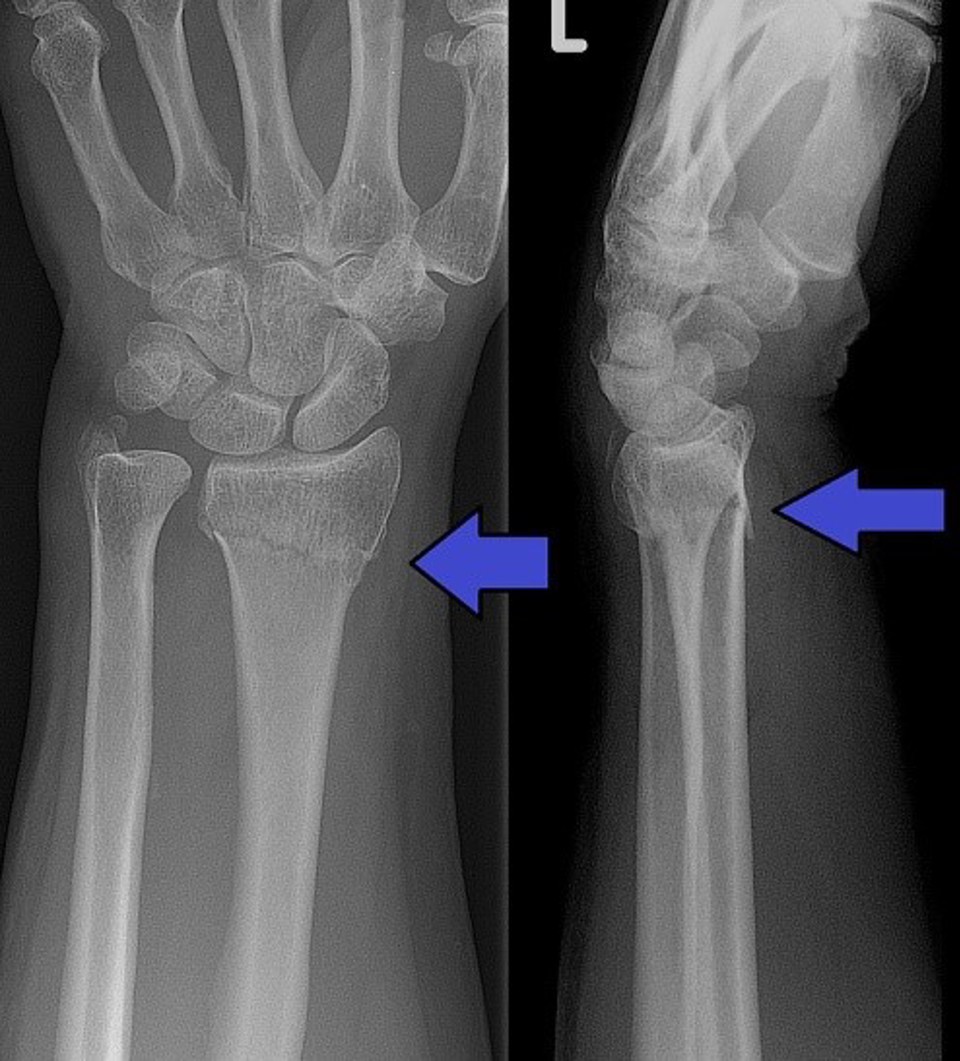
Figure 1: Distal radius fracture (indicated by arrows)
A small break at the end of the ulna sometimes accompanies this injury
These fractures are normally treated by immobilisation with a splint or plaster cast for approximately four weeks, depending on severity of the fracture.
What are the common symptoms after a radial fracture?
Beside general wrist pain, some people notice an increase in thumb pain after a distal radius fracture. This, should settle with time. It is important to keep the thumb moving, but not to over-stress it with repetitive pinching/gripping and twisting activities.
Discomfort in the wrist on the side of the little finger is also common, particularly if you were also diagnosed with an ulna fracture. Normally, this does not require any treatment, but it can take a number of months for this discomfort to settle. If this is a particular problem for you, please discuss your symptoms further with your hand therapist or Consultant.
Some numbness or pins and needles may also accompany your injury. This is due to the fact that the nerves may have been aggravated. This should settle with several months, but if you feel that the symptoms are becoming more frequent, affecting your hand function and/or becoming increasingly painful, then please contact the Department to discuss your symptoms.
Very occasionally, patients with a distal radius fracture develop a rupture (tear) in the long tendon that lifts the tip of the thumb up (extensor pollicis longus). This can be problematic as patients are unable to move their thumb backwards. Patients should discuss this with their therapist or Consultant.
After the fracture you may notice that your wrist may have a slightly different appearance. These changes are normally cosmetic and whilst they can be frustrating this should not affect you regaining functional use of your wrist and hand.
Advice following your injury
Try to rest the arm for the first 24 to 72 hours to allow the early stage of healing to begin.
Swelling
Swelling is a common problem post fracture. Controlling any swelling can promote recovery of normal hand function. Raising the hand regularly throughout the day can help to drain any swelling. Whilst the hand is raised, try rapidly making a fist 5 to 10 times. Stroking your hand/wrist can also help to move the swelling. This can be completed using long firm strokes starting from the fingertips in a downward direction towards your elbow. Another option is to apply an ice pack, wrapped in a towel to the area.
Gentle Activity
As soon as your cast is removed, it is important to start to use your injured hand in normal day-to-day tasks. You can complete all normal light tasks such as washing and drying up, getting dressed and using a keyboard. By gradually moving your wrist and trying to regain normal function within the limits of pain, the quicker it will recover.
Grip function
Regaining finger movement is also a key focus of early stages. We would advise you to regularly complete the finger exercises with a focus on achieving a full fist and finger straightening - rather than wriggling the fingers. Alongside these specific exercises, whenever you grip hold of household objects such a toothbrushes, cutlery or hairbrushes, you should attempt to close your fingers fully around the object.
Splint
You may have been provided with a splint after your injury e.g. a Futura splint (Figure 1). We would advise that you gradually start weaning off this in order to let your wrist get strong on its own. To get started, dont wear the splint when at home or when in low risk situations; over time aim to stop wearing your splint at night and when out in public spaces.
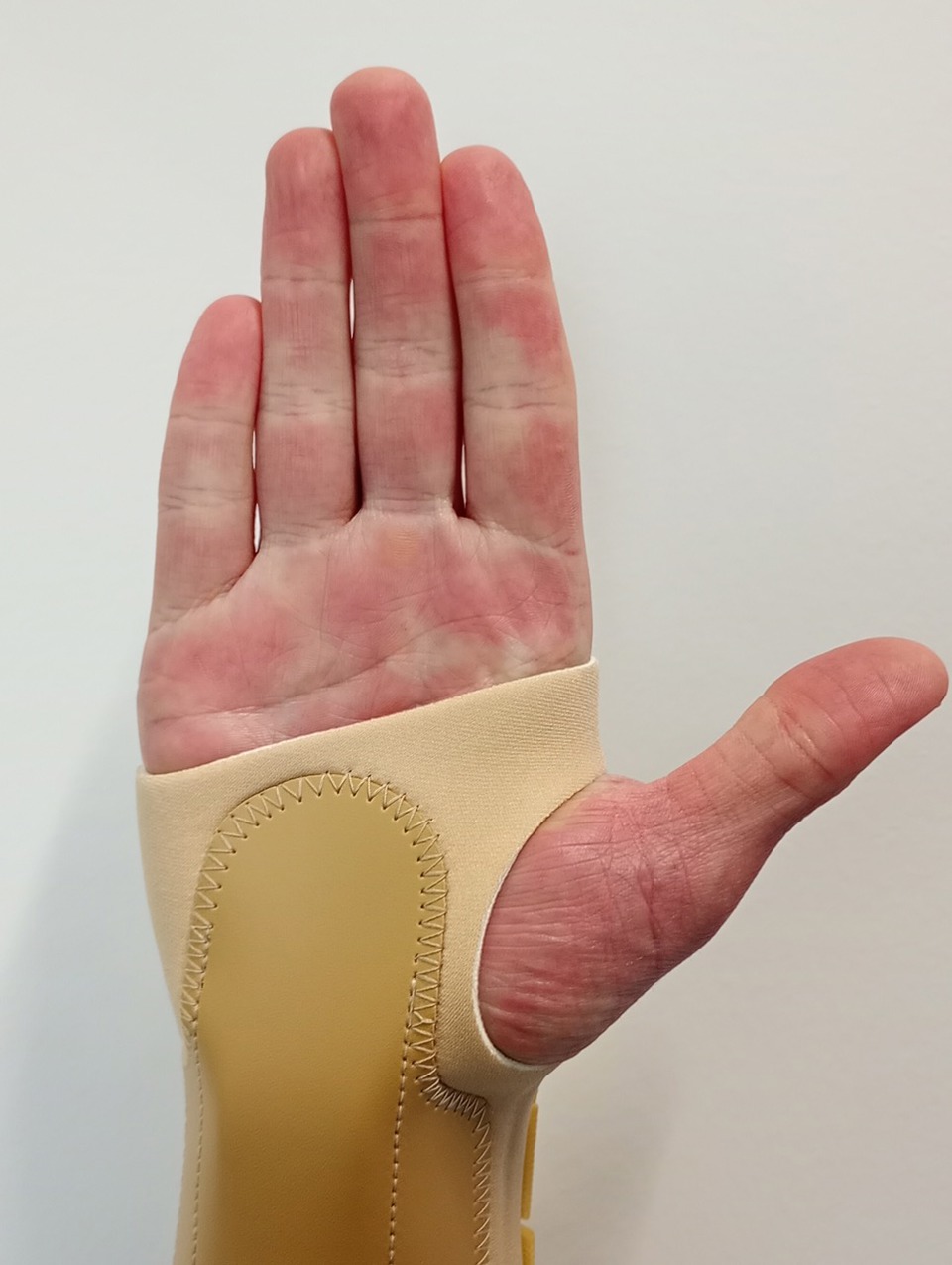
Figure 1: Futura splint
Heat
To assist regaining your movement, you may use heat prior to completion of exercises. For example, you may complete your exercises in the shower, or place a hot water bottle/warmed towel on the wrist 5 to 10 minutes before doing the exercises.
Pain
It is normal to have some level of discomfort after a fracture. This is not mean that you have unsettled the fracture. We would suggest that you exercise to the level of an unpleasant stretch feeling only. On a pain scale, we would suggest this to be around 5 out of 10 discomfort -this discomfort should settle down quickly on completion of the activity (within 30 minutes). If you are regularly experiencing significant pain; or ongoing pain for a long time following exercise, please discuss this further with your hand therapist or Consultant.
Home exercise programme
After the cast has been removed it is important to move and exercise your wrist. Normal movements and exercise will help to reduce stiffness and gradually pain will improve. Remember to move your elbow and shoulder too, if they are not injured, as they may also be stiff. Practice moving your wrist as if you were throwing a dart. This movement is used in 75% of all hand tasks. It is important to regularly complete the exercises. Evidence has shown that regular completion of exercises will improve your outcome post fracture. We suggest aiming to repeat the exercises 3 to 4 times a day. Build up repetitions as able, if your pain increases then decrease the repetitions and or times a day.
The following exercises are suggestions; they are listed in order of intensity. Only move onto the next exercise when you can manage the current once without greatly increasing your pain or swelling.
Wrist rehabilitation exercises
Finger exercises
Tendon gliding
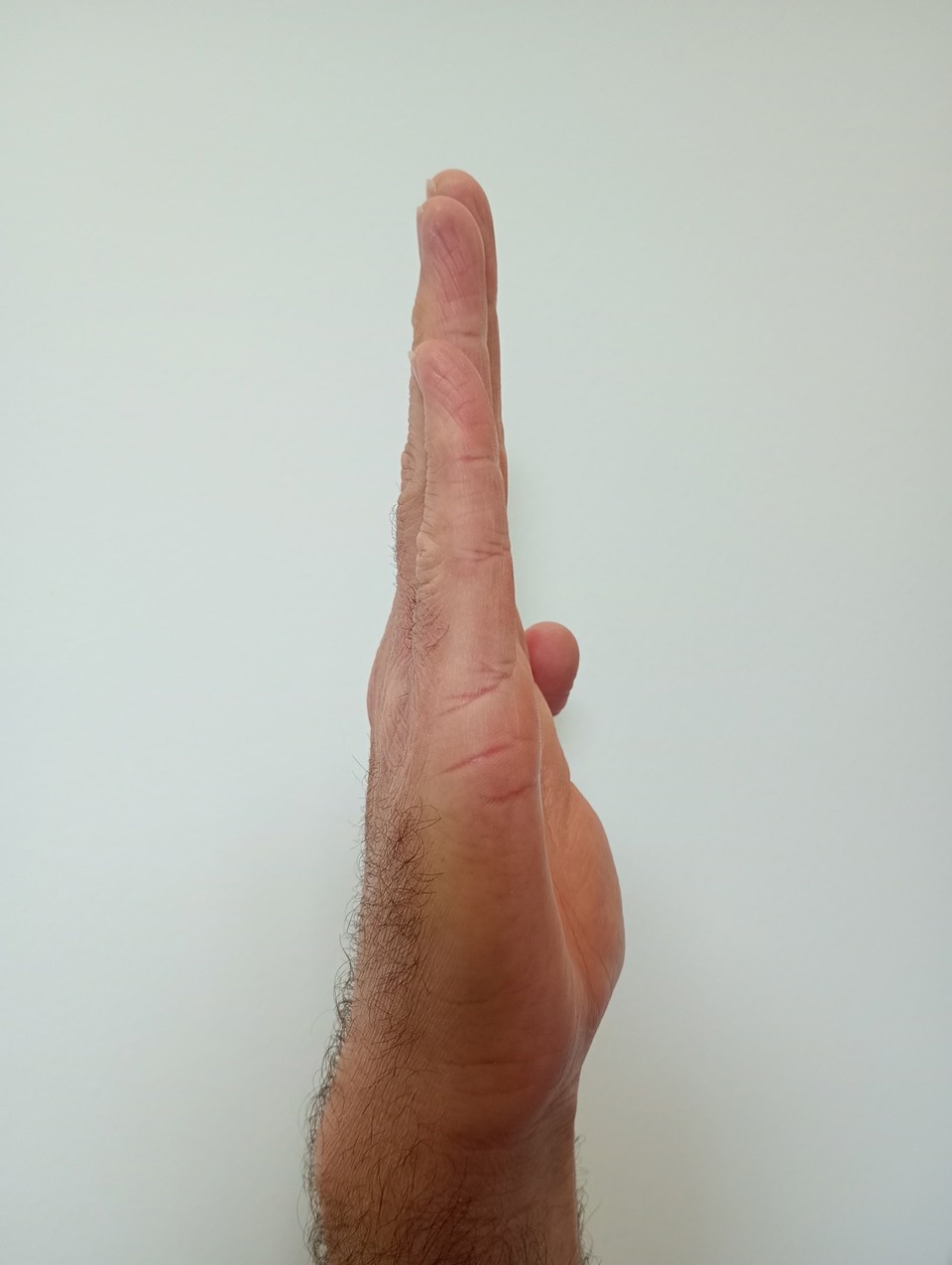
1. Start with wrist and fingers fully straight
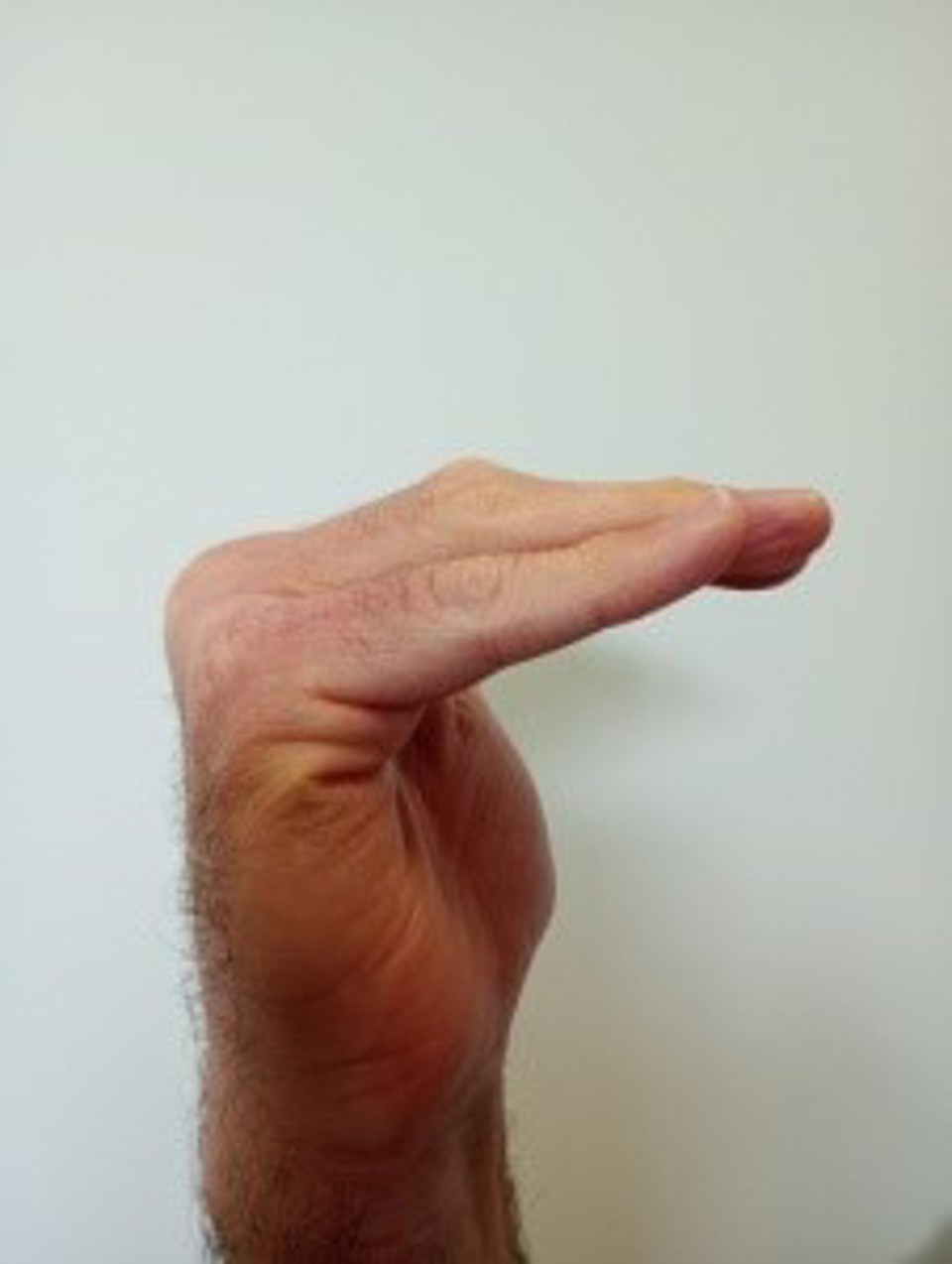
2. Keep fingers straight and bend at mid hand joints
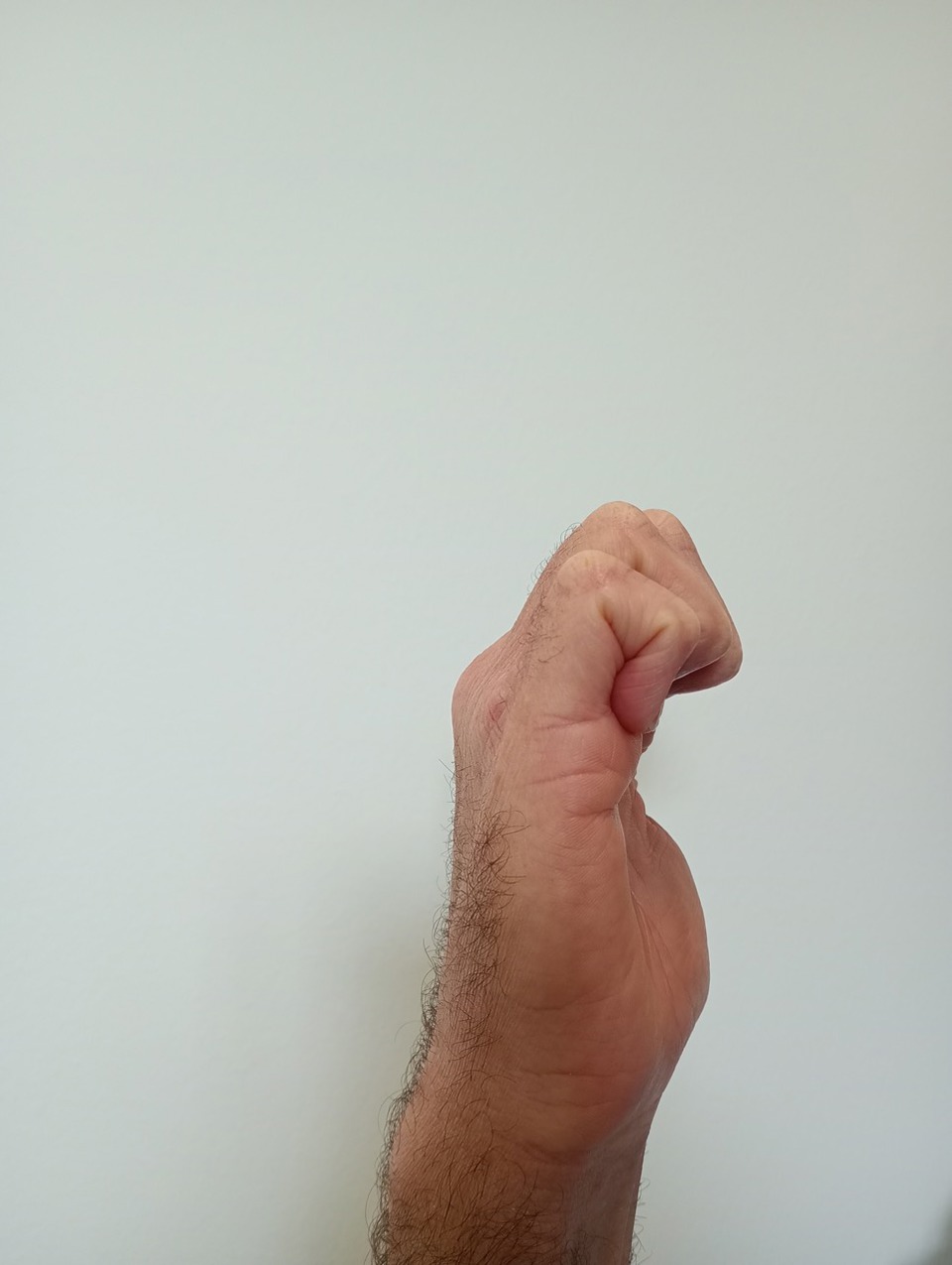
3. Then bend end knuckle joints
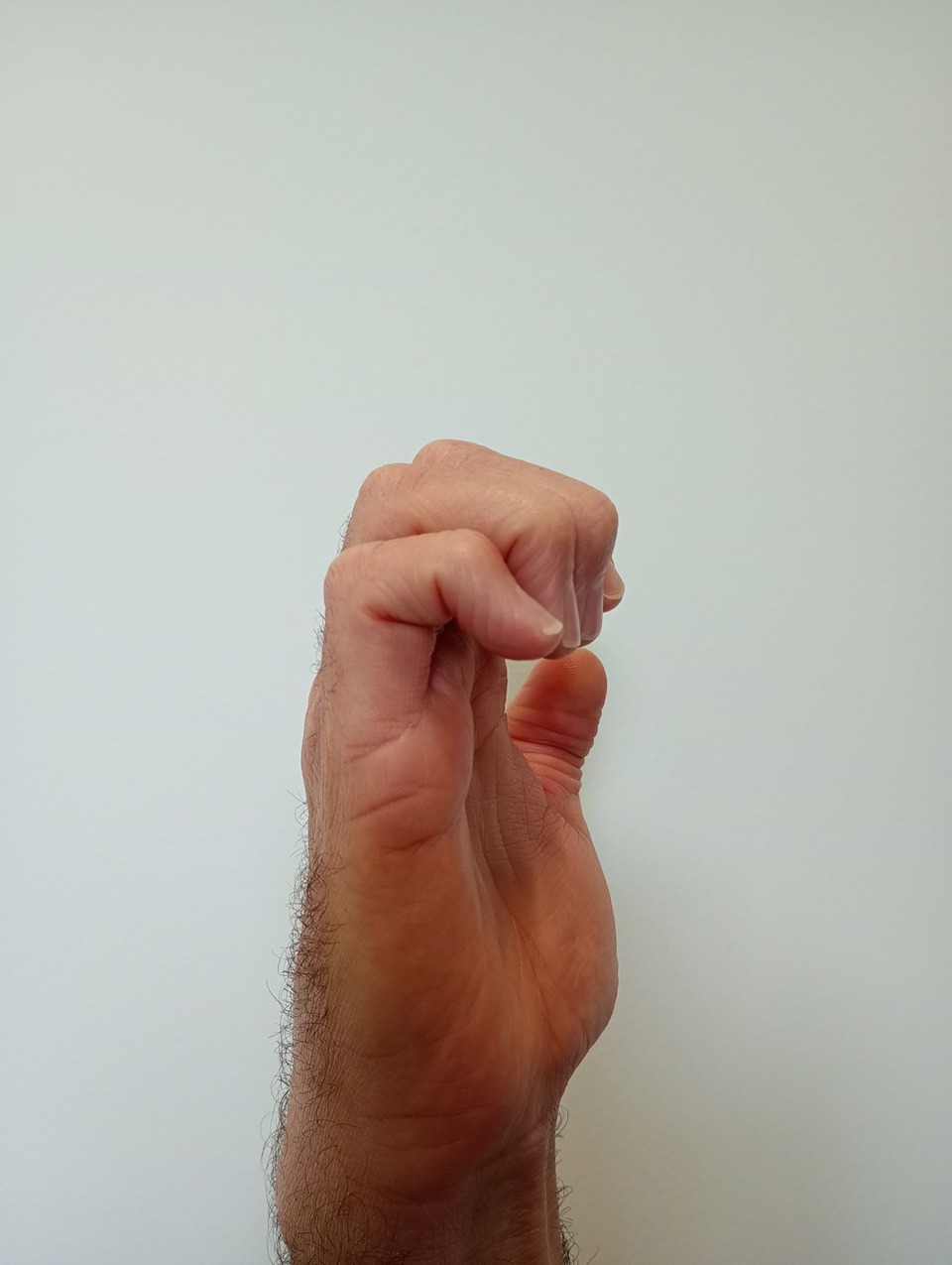
4. Then bend middle finger joints

5. Straight fingers again
Complete the sequence of finger exercises. Increase the stretch into each position, using the other hand to assist the movement if the fingers feel stiff.
Thumb exercises
Thumb opposition
Touch the tip of each finger in turn with the tip of the thumb then move the tip of the thumb down the length of the little finger to its base.
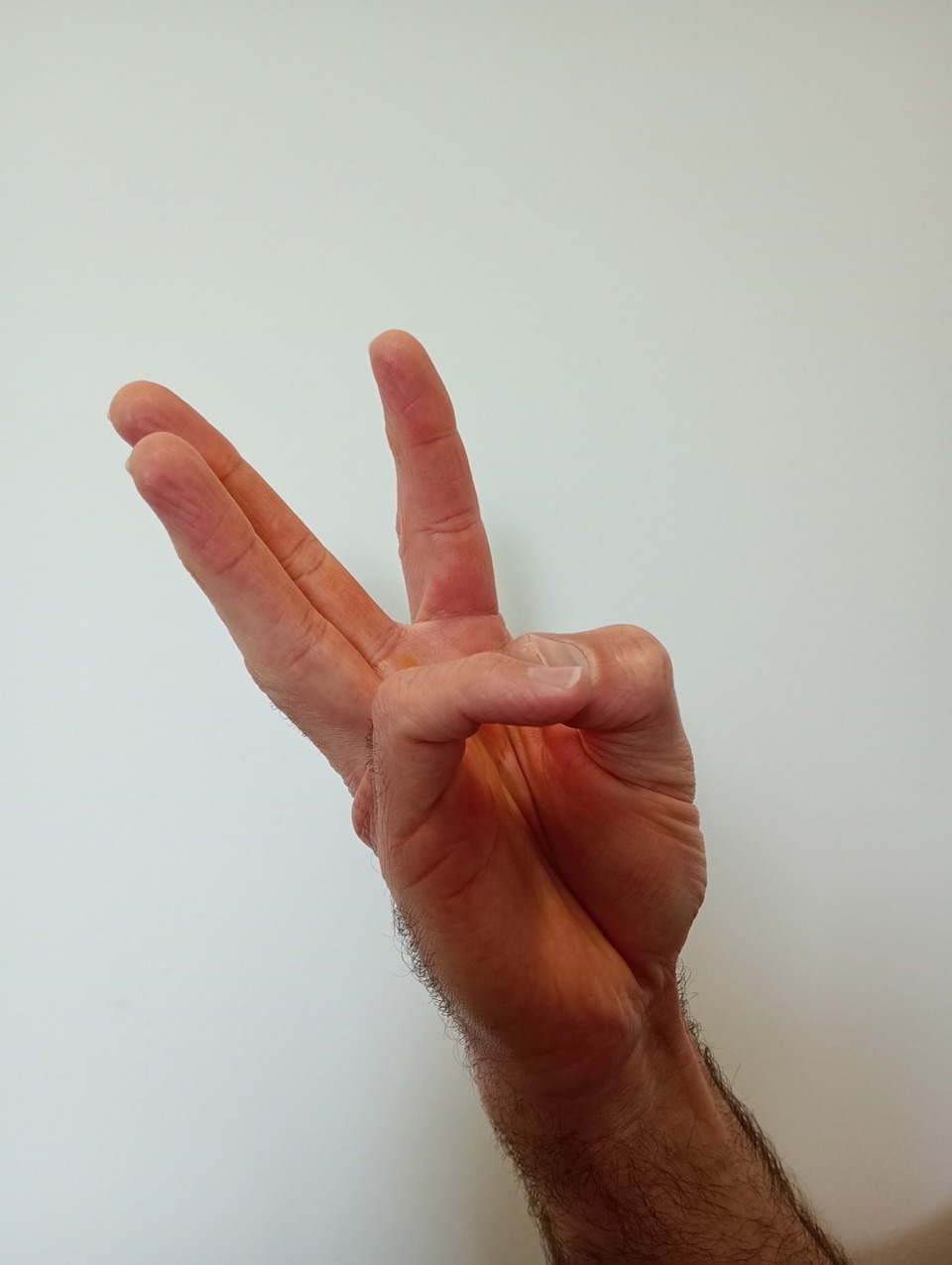
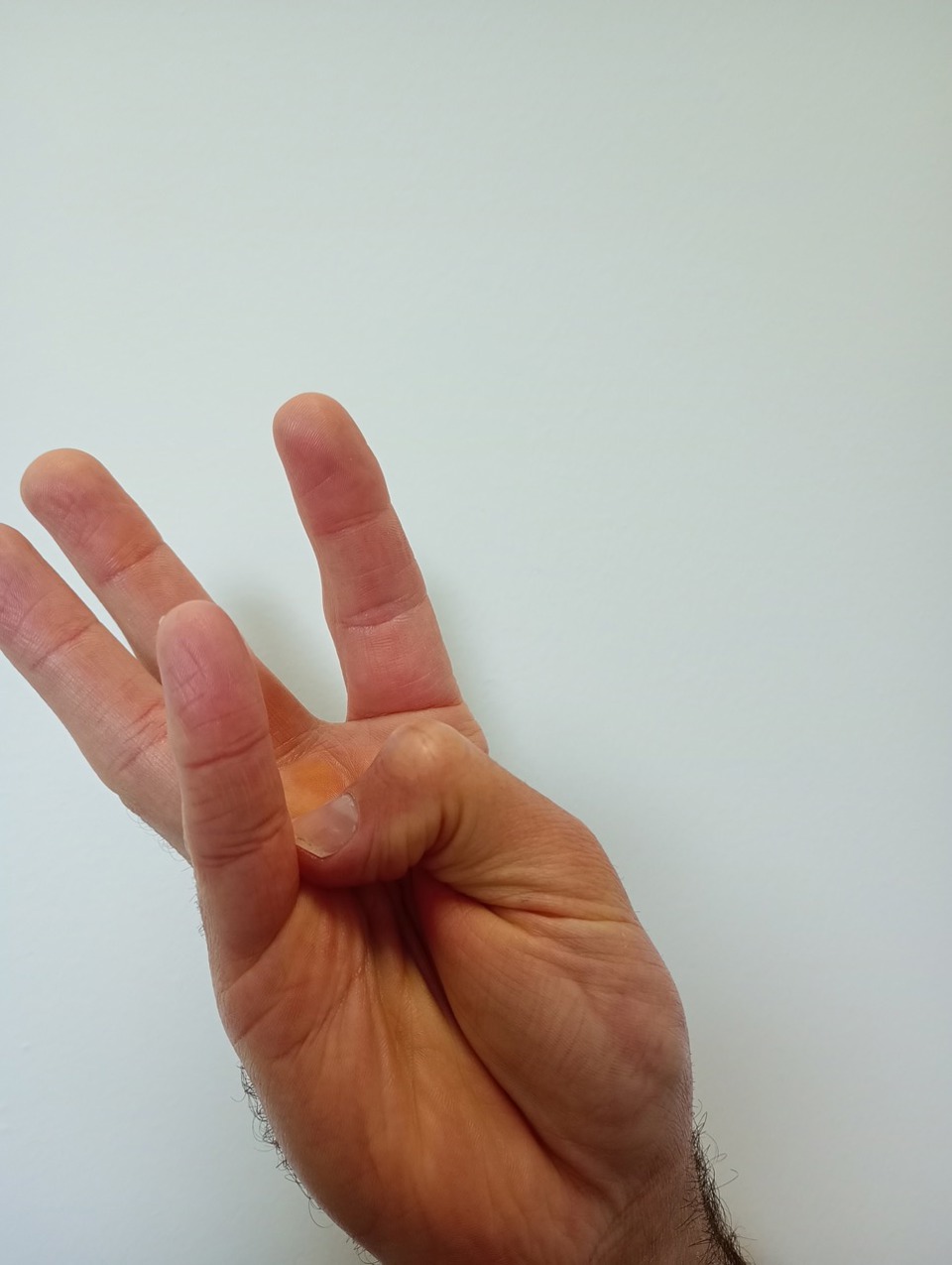
Active wrist extension and flexion
Bend the wrist backwards (extension) until you feel tightness. Hold the stretch for the count of 10 to 15 seconds. Then bend your wrist forwards (flexion) until you feel tightness. Hold the stretch for the count of 10 to 15 seconds. Repeat 5 to 10 times.
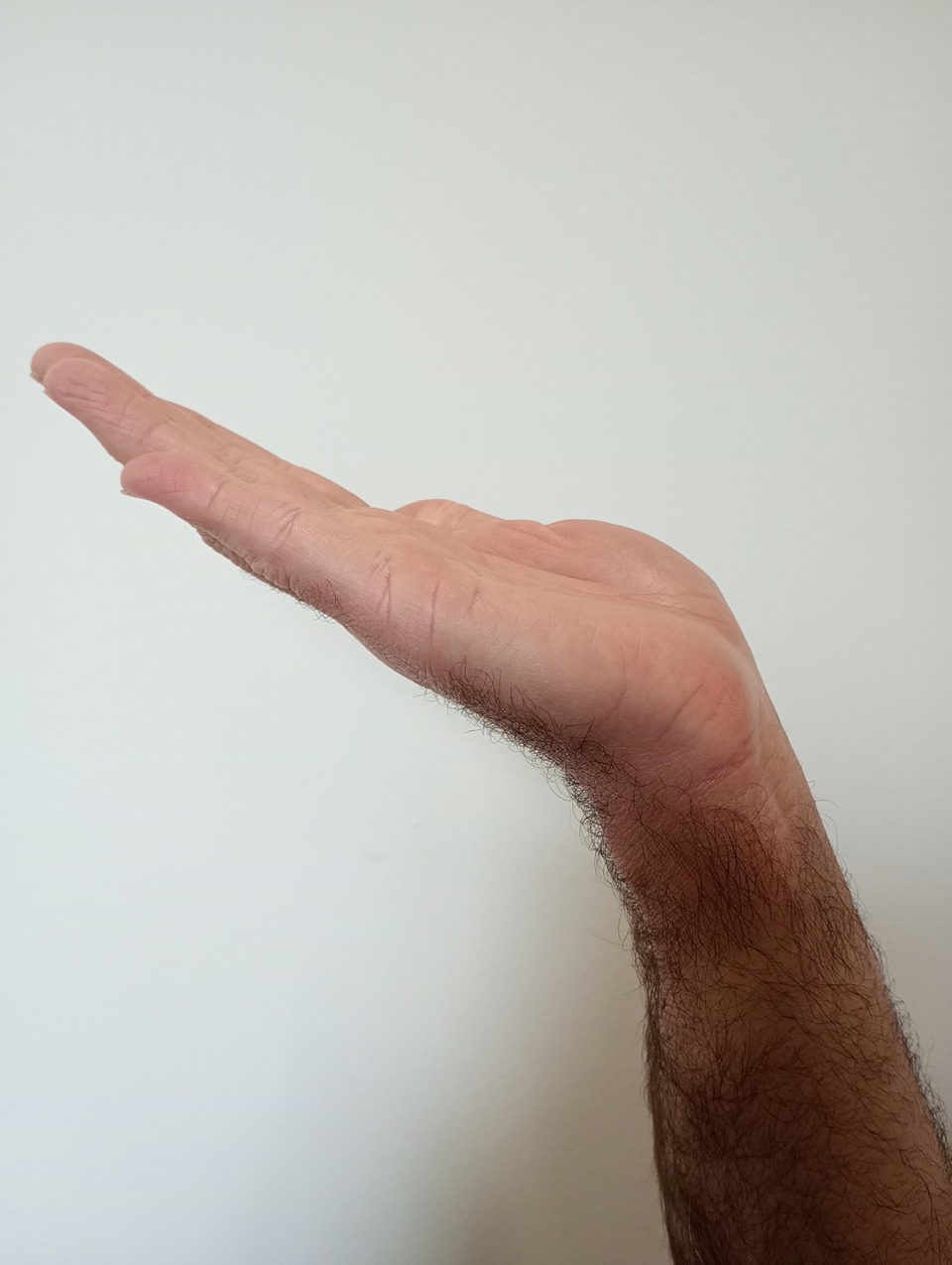
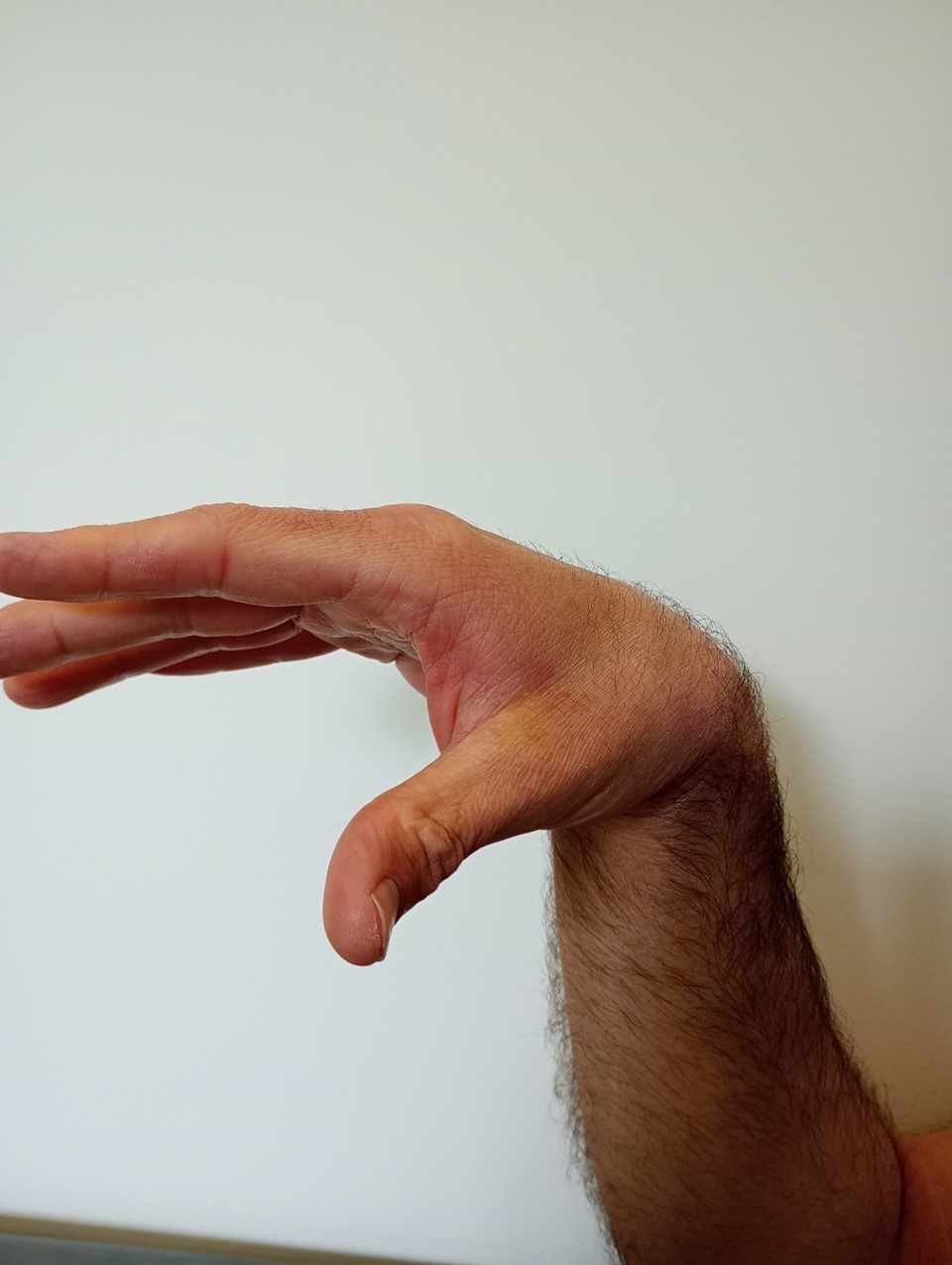
Active wrist/elbow supination and pronation
Keeping your elbow tucked into your side, rotate your forearm so the palm of your hand faces upwards (supination) and then rotate your forearm in the opposite direction (pronation). Hold each stretch for the count of 10 to 15 seconds in each direction.

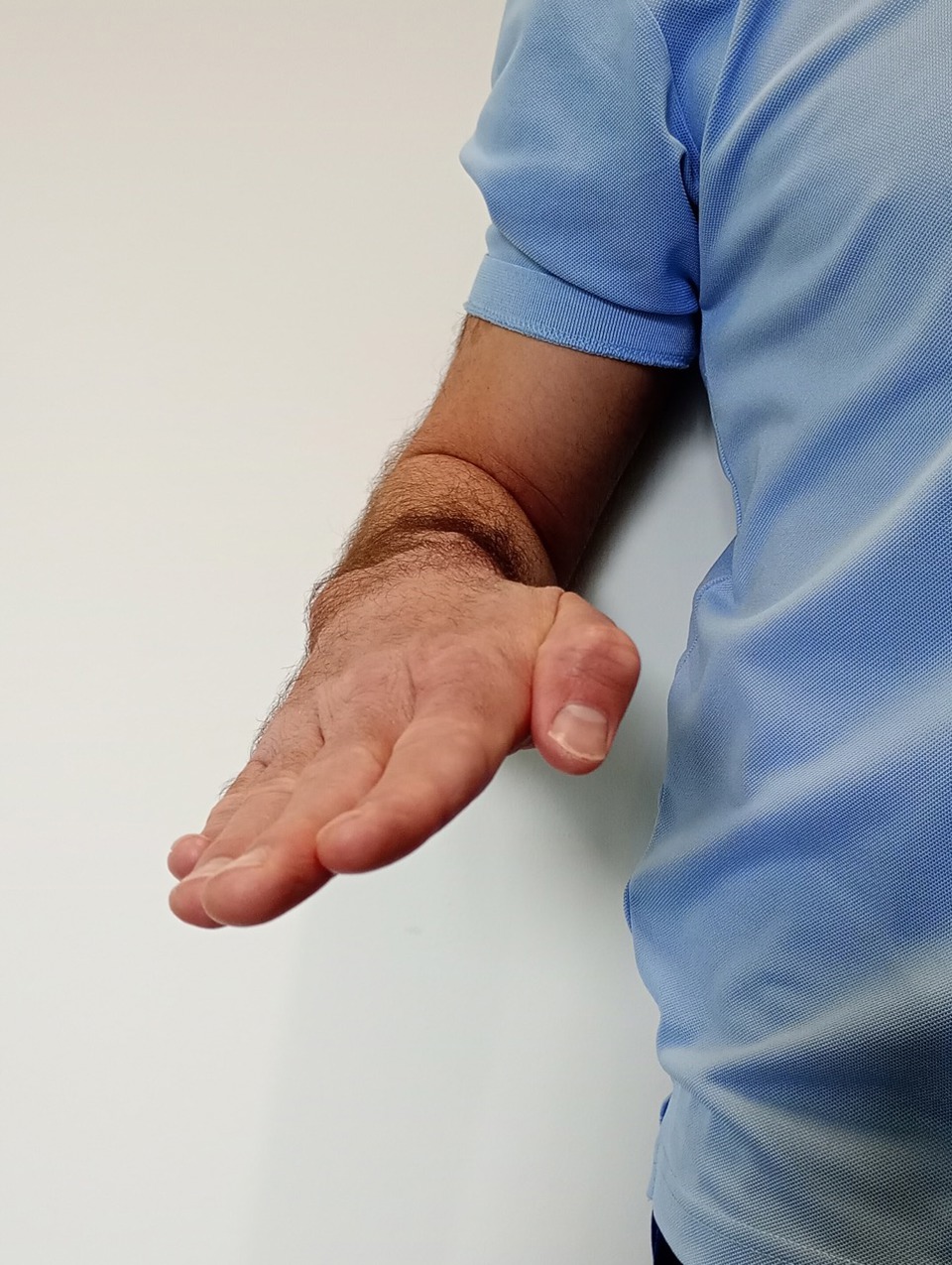
Dart throwers motion
Rest your elbow on a table. Hold onto a pen with a light grip. Pretend you are going to throw the pen like a dart by bending your wrist back in the direction of your thumb, and then move your wrist forward towards your little finger. Repeat 5 times.
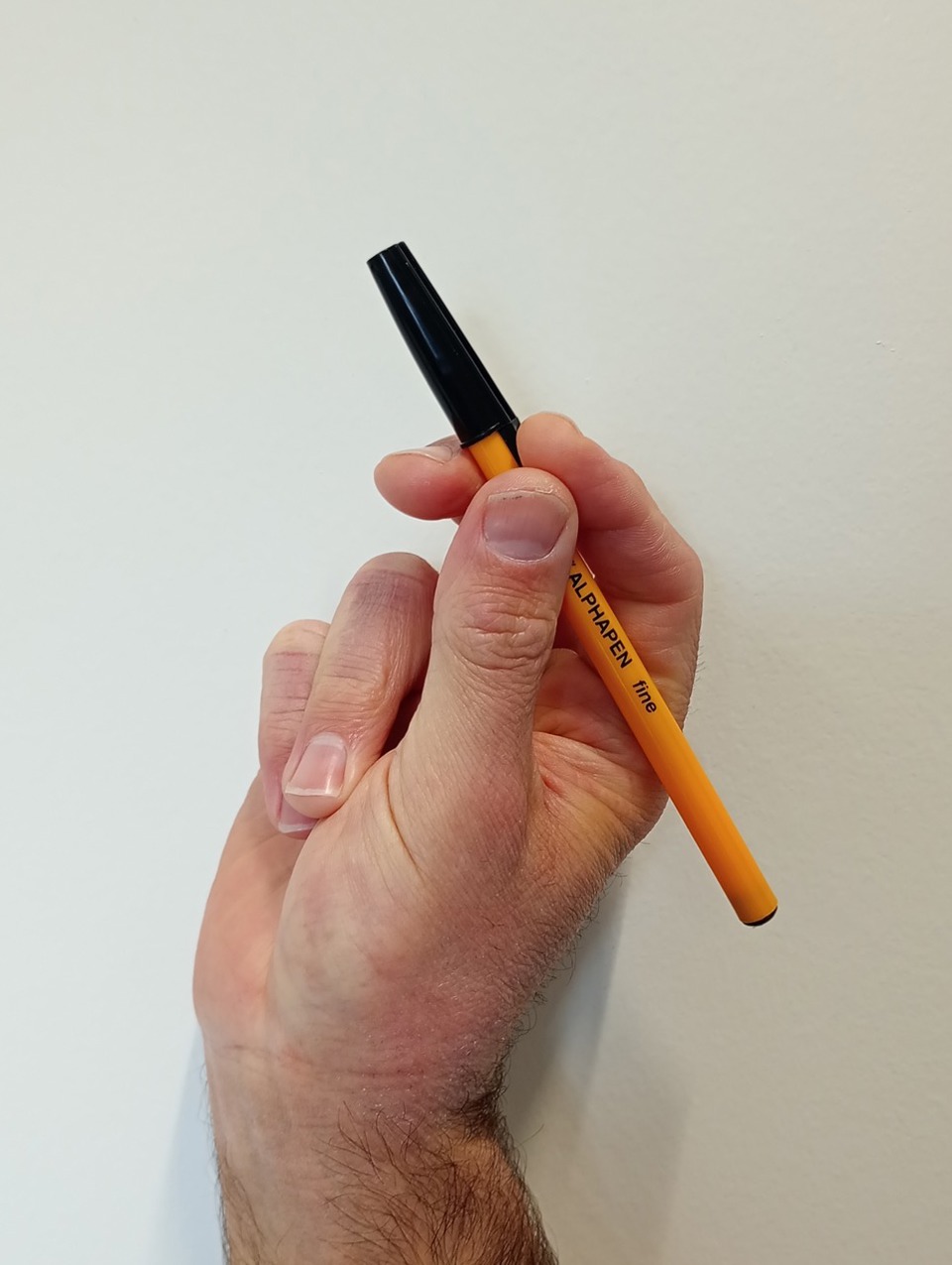
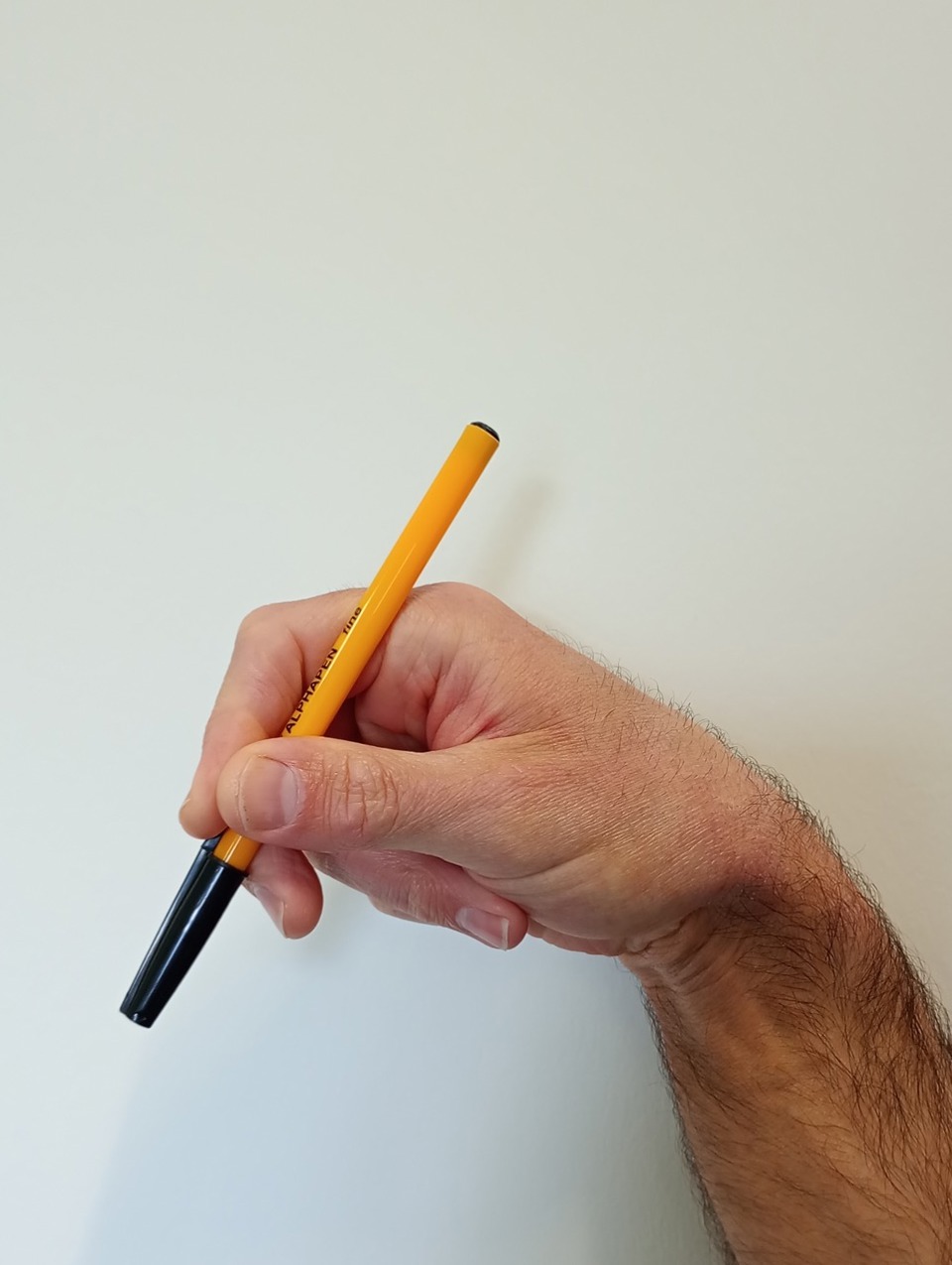
Wrist extension and flexion stretch
Bend the wrist backwards (extension) until you feel tightness. Then use your other hand to push into the movement. Hold this position for 30 seconds.
Bend the wrist forwards (flexion) until you feel tightness. Then use your other hand to gently push into the movement. Hold this position for 30 seconds. You may find it easier to complete this exercise with your hand over the side of a table. Repeat 2 times.

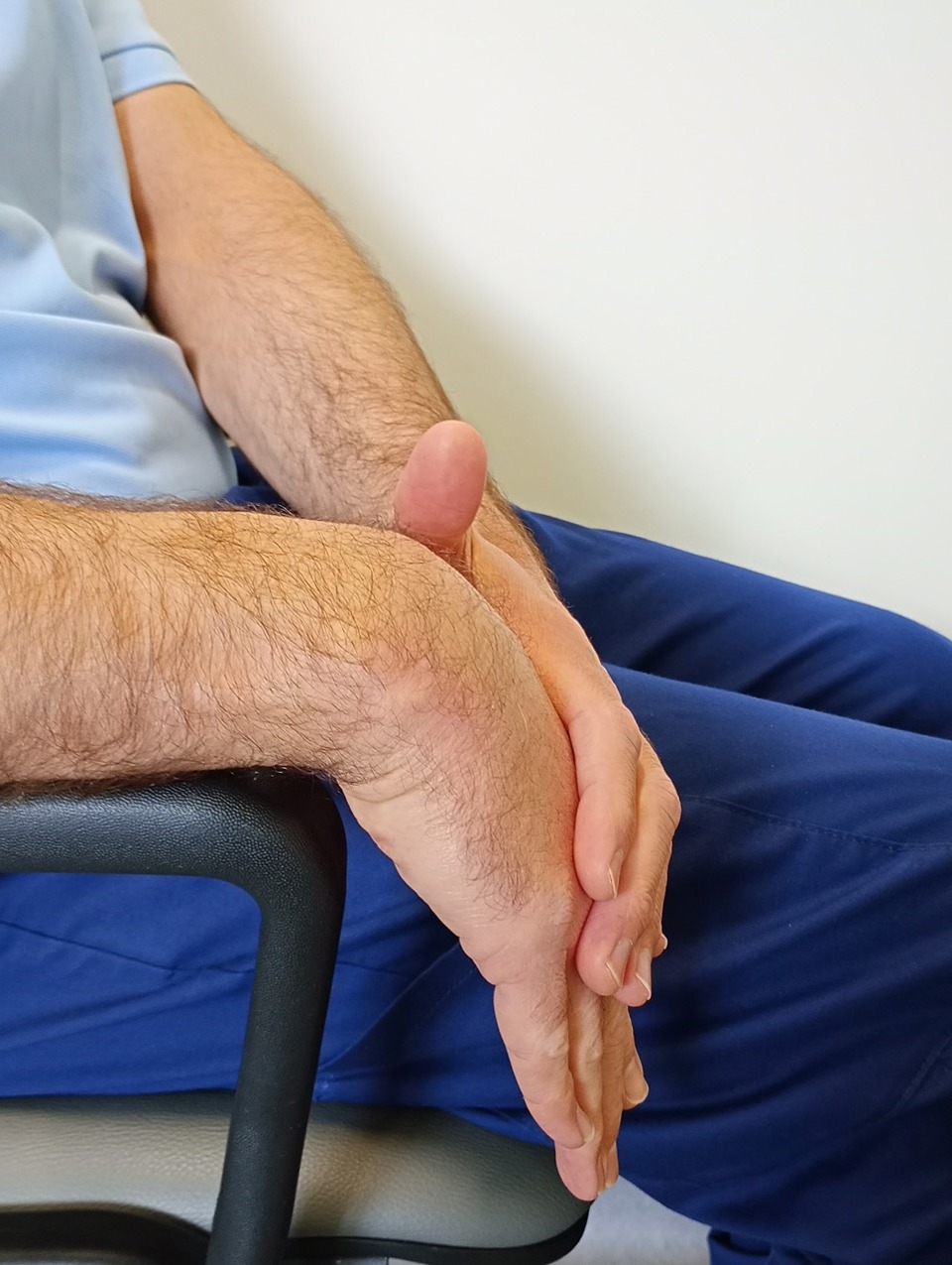
Wrist/elbow rolling
Keep your elbow tucked into your side. Rotate your forearm so the palm of your hand faces upwards (supination) and then downwards (pronation). Use your other hand to gently push your wrist further into each position. Hold each stretch for the count of 30 seconds in each direction.
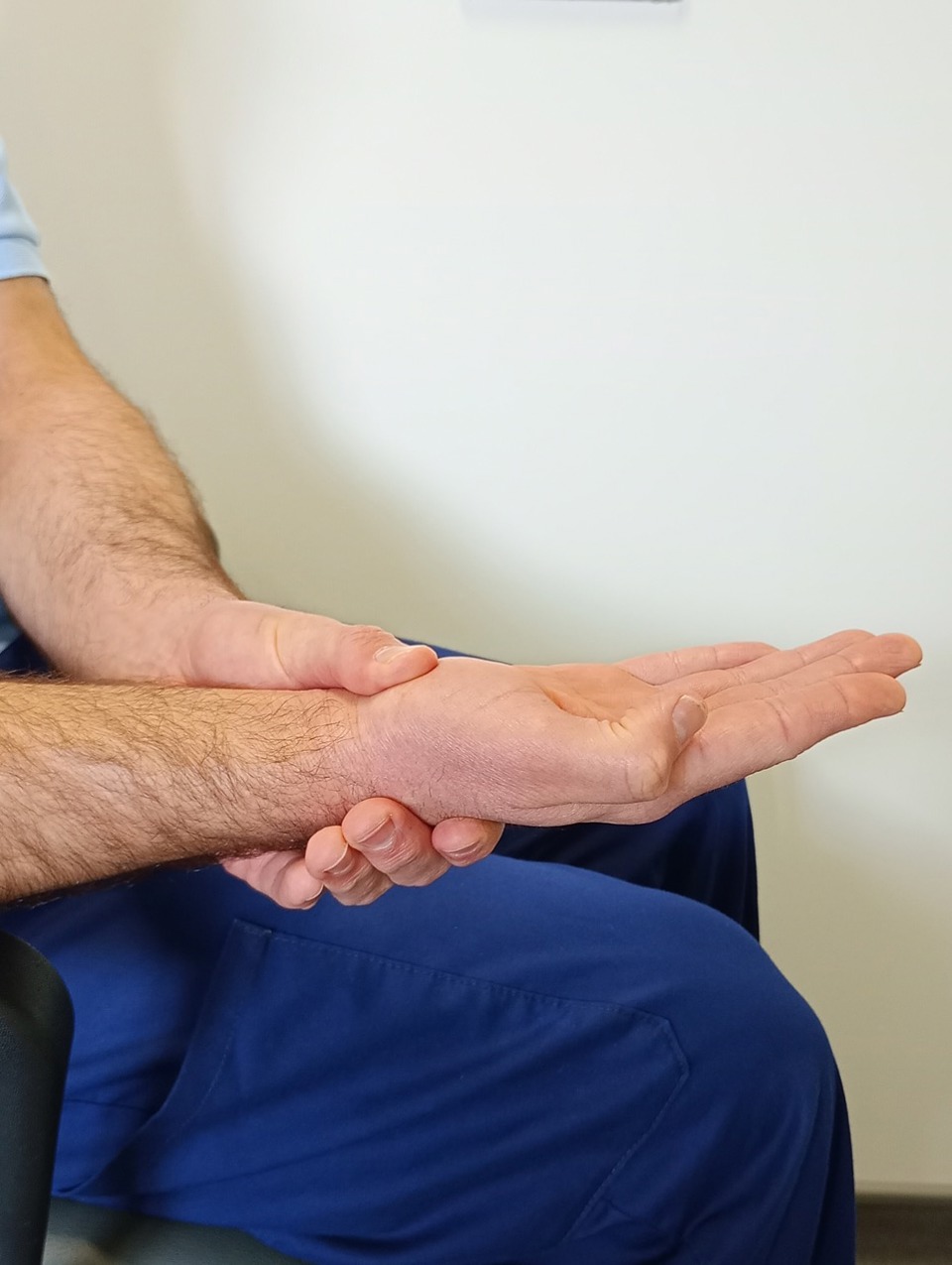

Prayer stretch
Place both hands together with your elbows bent (as though praying), ensuring your palms are touching. Slowly bring your hands downwards and bring your elbows out. Ensure the bottom of your palms remain touching throughout. Hold this position for a count of 30 seconds.
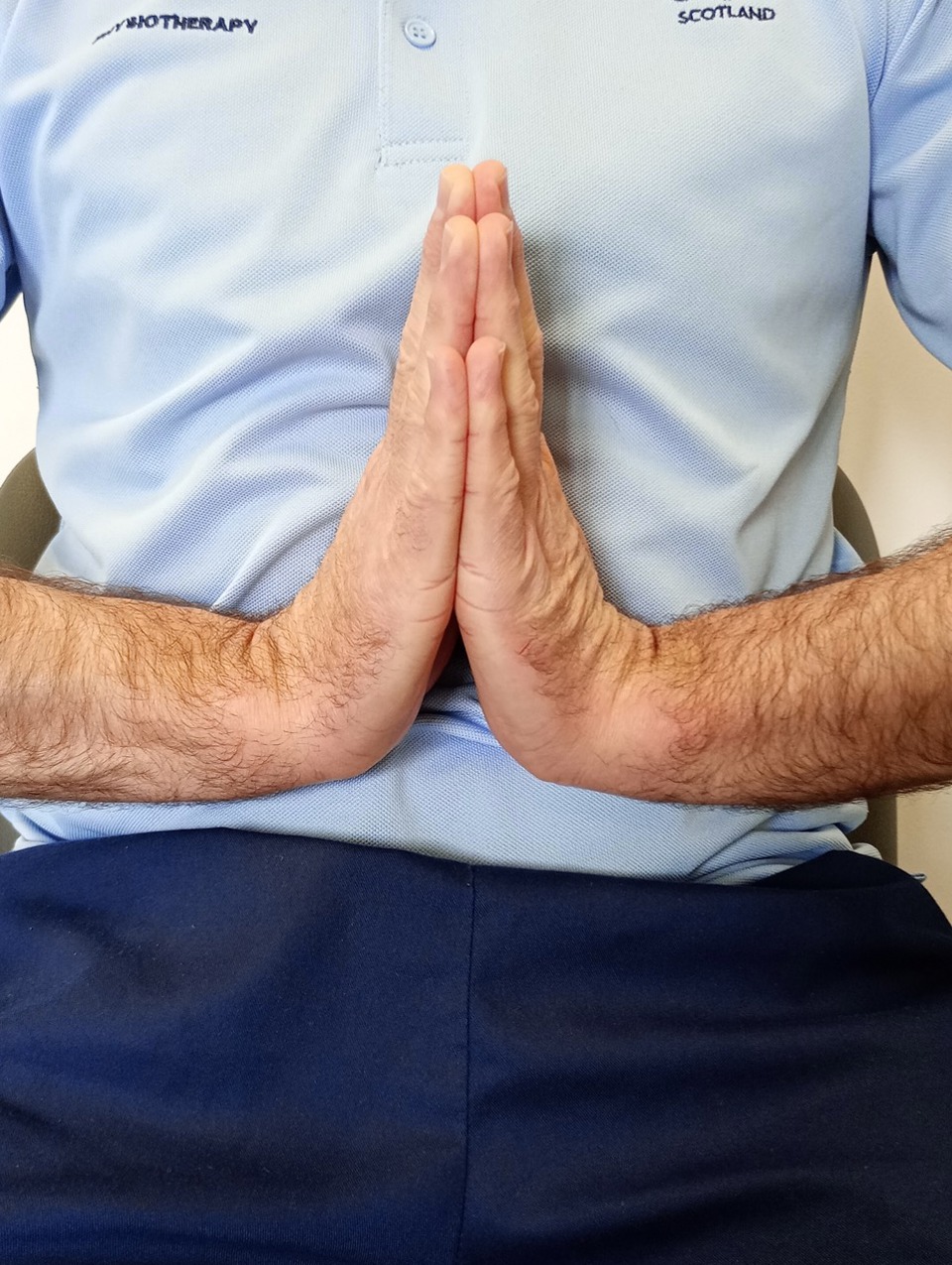
Rolling an object
Rest your hand and wrist on an uneven surface such as a ball, rolled magazine, cushion or water bottle. Without leaning through the object, roll your hand and wrist over it slowly and smoothly. If using a cushion or a ball, try to control your movements in a circular pattern or try to write your name.
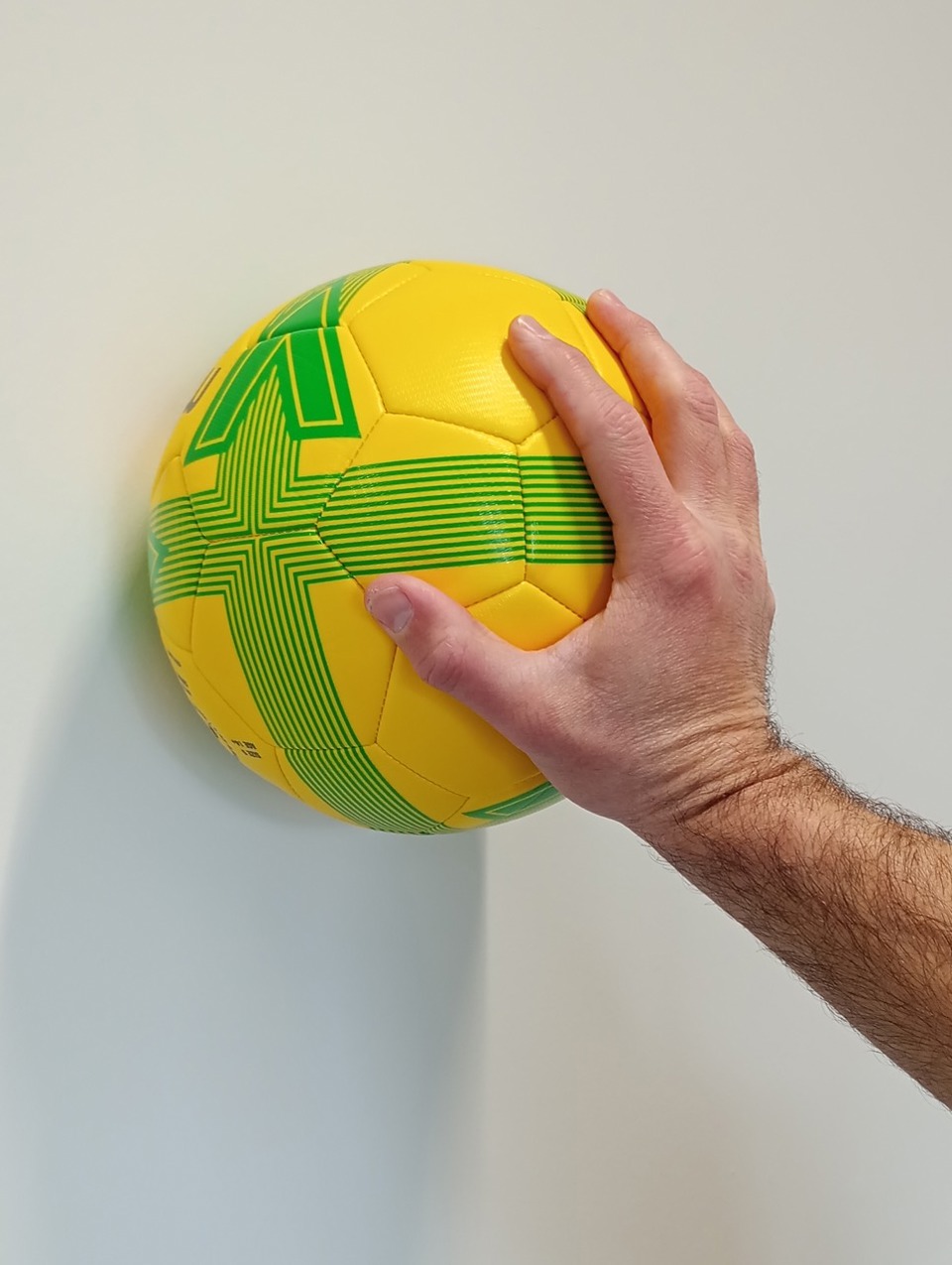
Control of forearm rotation
Start with your elbow tucked into your side, your palm is facing upwards and your chosen weight in your hand (e.g. a rolled up paper or magazine as shown in the picture). Move your hand slowly and smoothly round so that your palm is facing downwards. Then slowly return to the starting position. Make sure you keep your elbow tucked into your side throughout the exercise. Repeat 5 times.
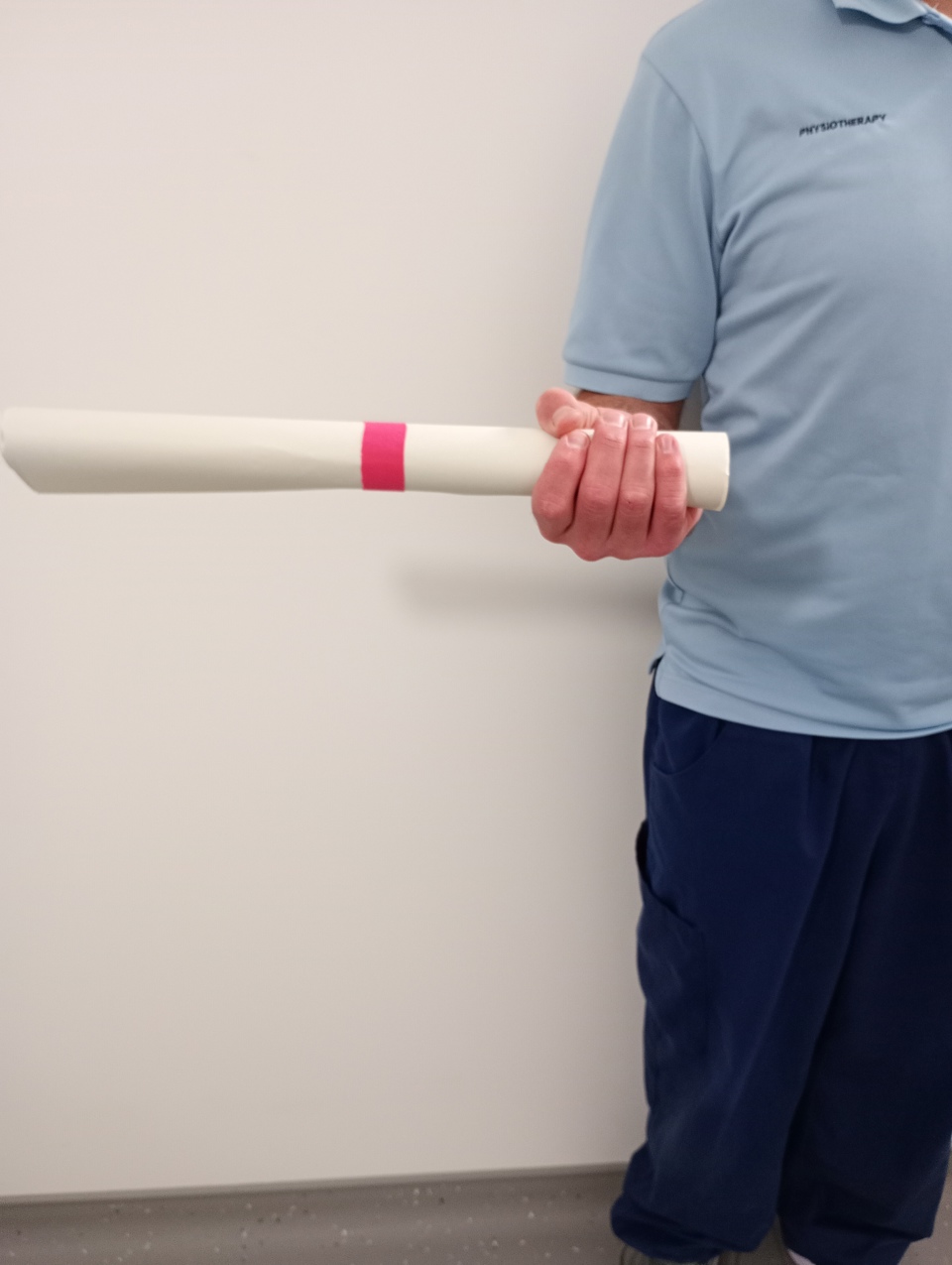
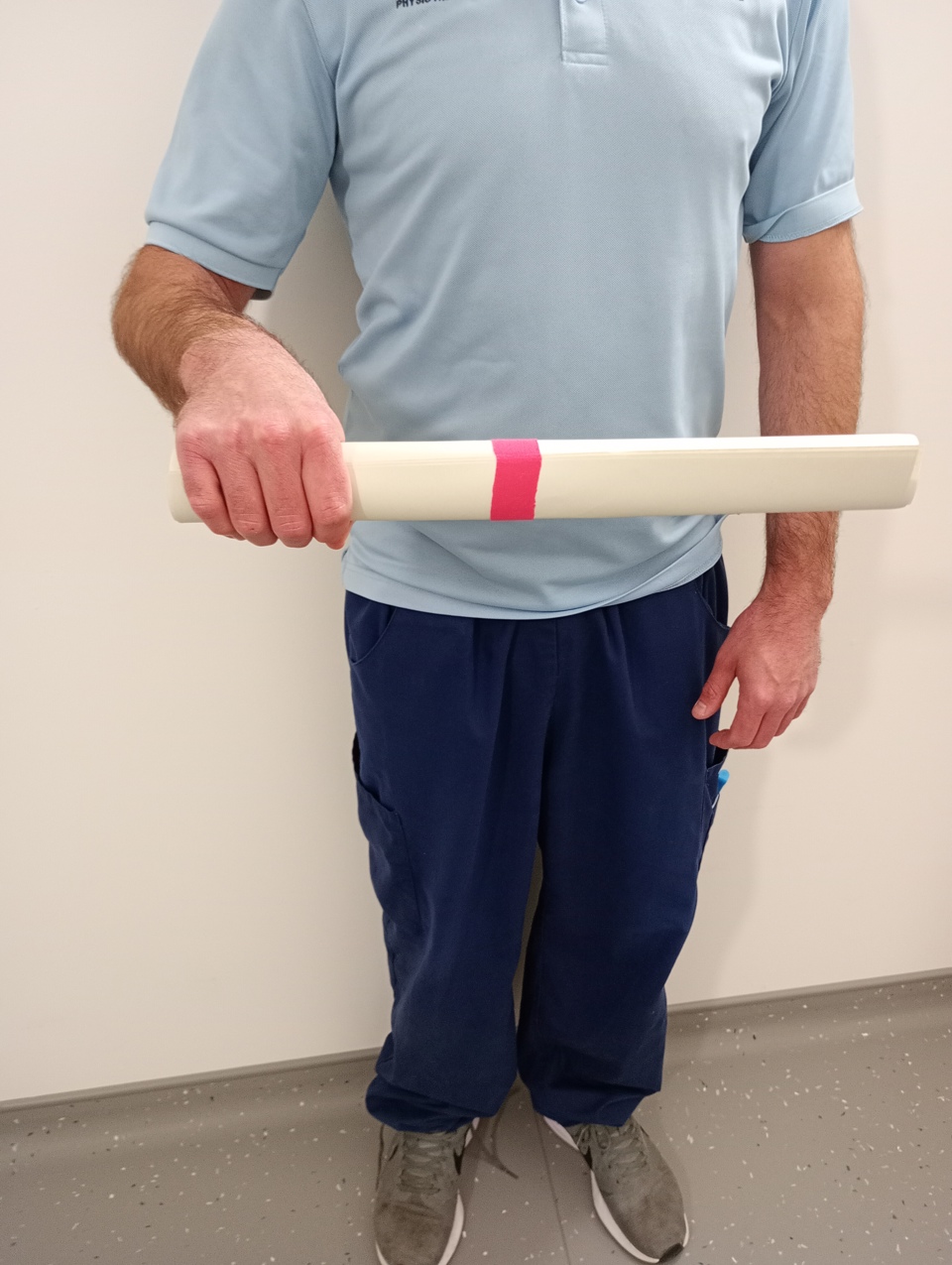
Weight-bearing on a table
While standing, place your hand flat on a table. Lean through the table gradually building the stress with with 25%, 50%, 75%+ of your weight. Hold the position for 5 to 10 seconds.
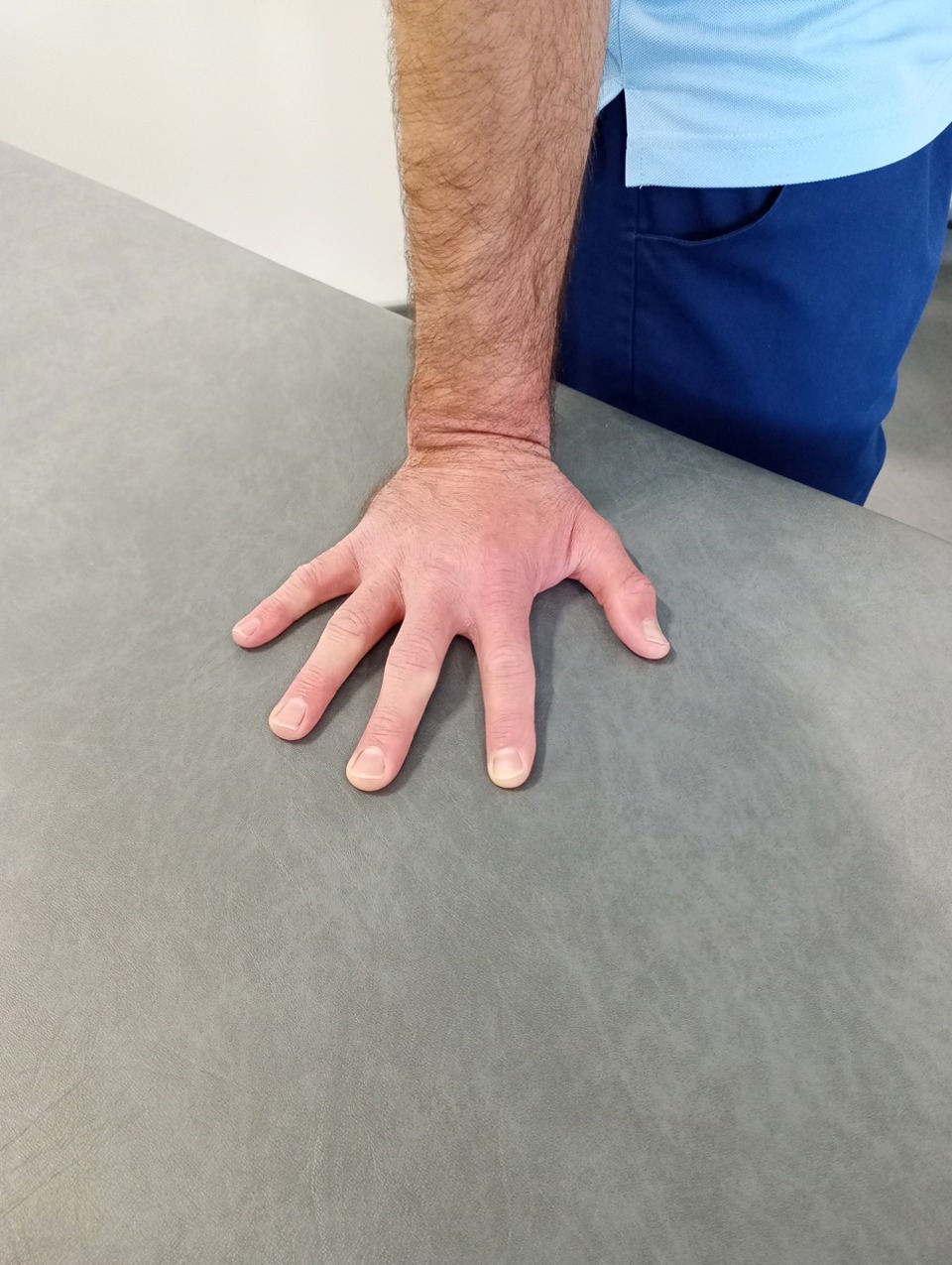
Weight-bearing on a wall
Face a wall and stand a little further away than an arm’s length away with your feet shoulder width apart. Lift your arms and place your palms flat against the wall at shoulder width apart. Lean into the wall increasing your weight as you feel comfortable to do so. Hold the position for 3 to 5 seconds.
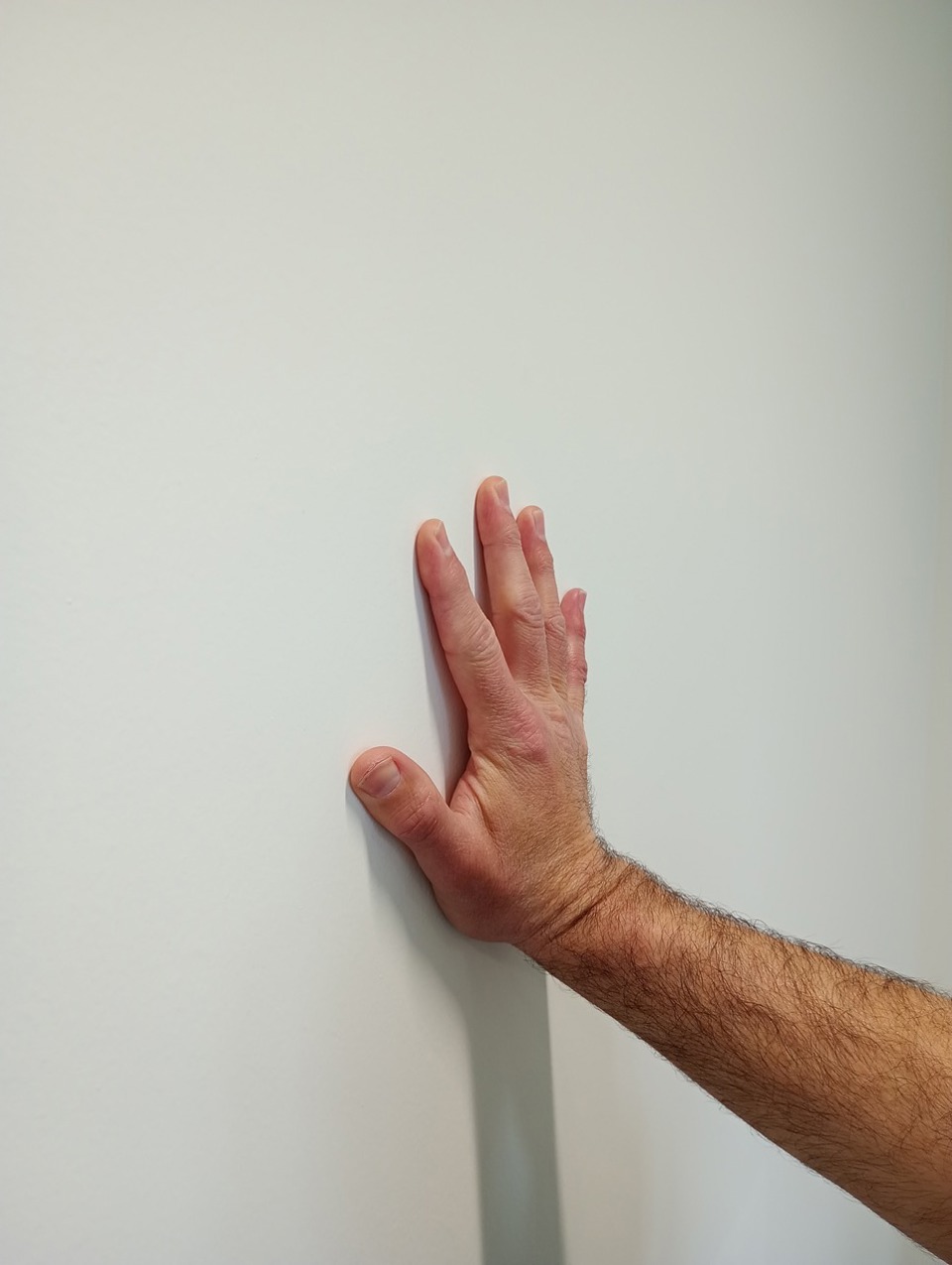
Weight-bearing on the floor
While kneeling on the floor place your palms flat on the floor in front of you. Lean into the floor increasing your weight as you are able to tolerate.
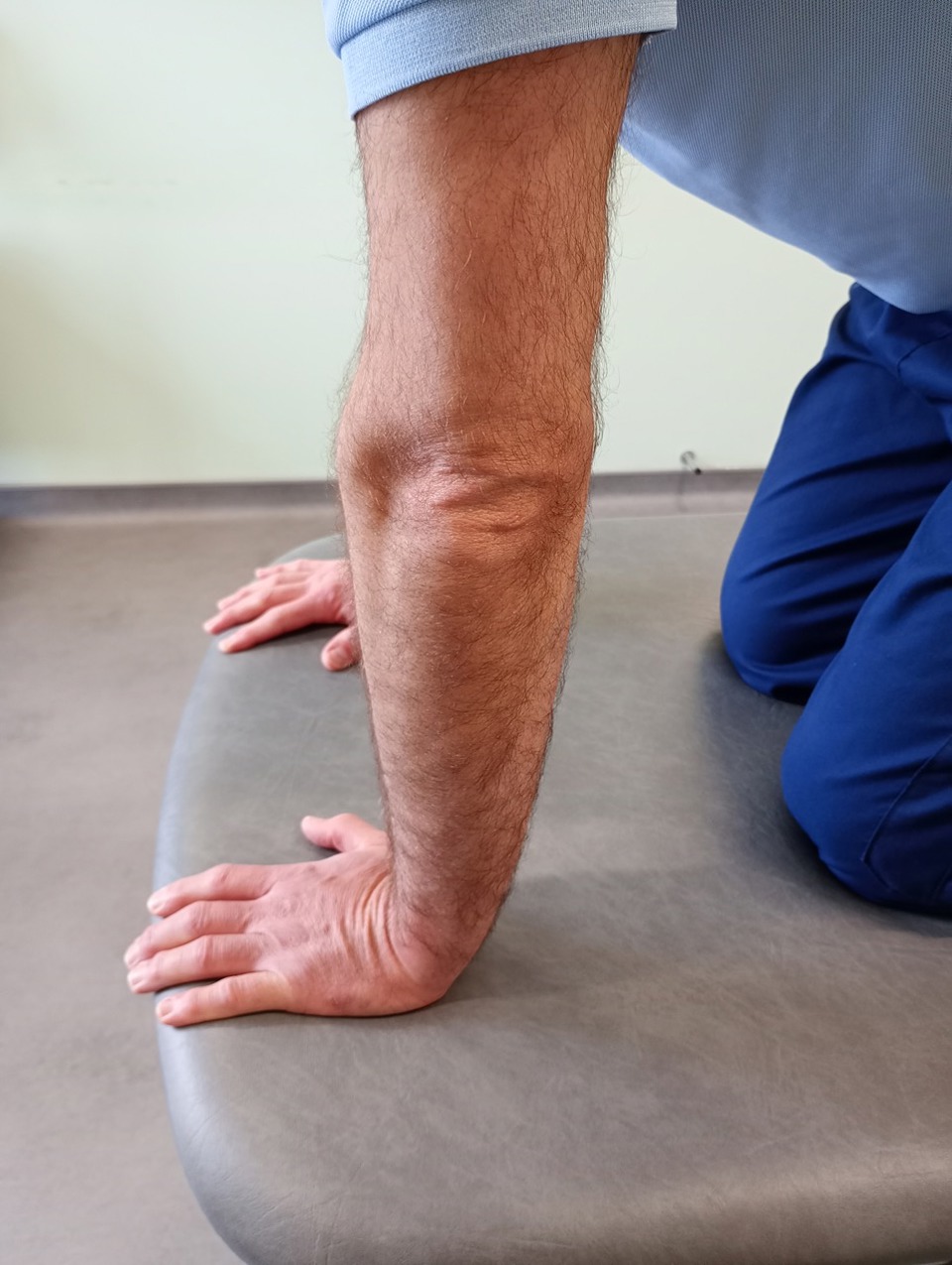
Strengthening exercises
The following exercises are designed to help increase the stability and strength in the wrist. Your therapist will assess to see what level of exercise you should begin with and progress your program as you improve.
Isometric exercises flexion
Rest your forearm on the table, palm up.
Bend (flex) wrist forward
With your unaffected hand, gently push down on your palm and resist this movement so that your wrist does not move. Hold this position for 3 to 5 seconds, then relax.
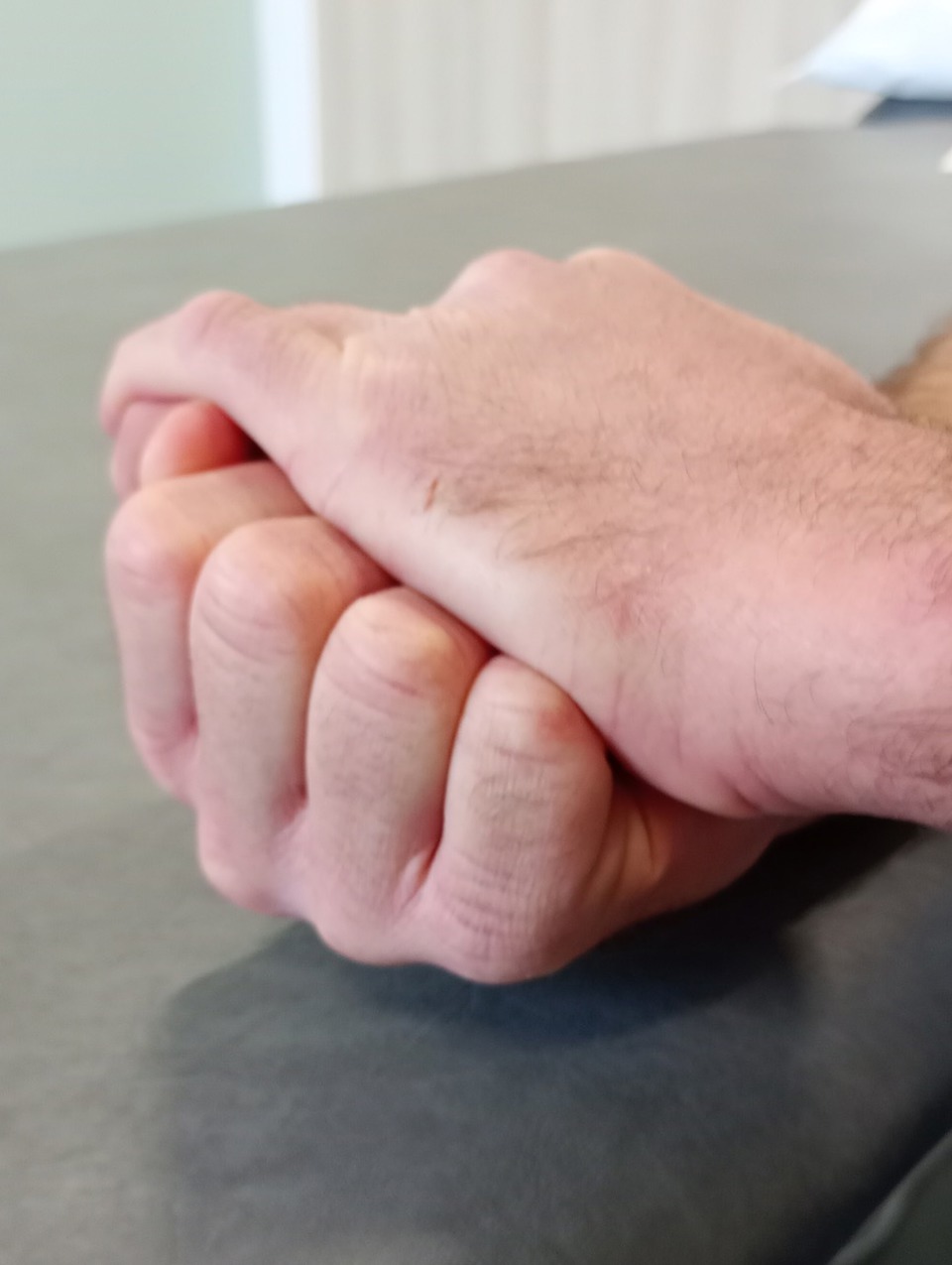
Bend (extend wrist) backward
Rest your forearm on the table, palm down. Bend wrist back (extension). With your unaffected hand, gently push down on your palm and resist this movement so that your wrist does not move. Hold this position for 3 to 5 seconds, then relax.
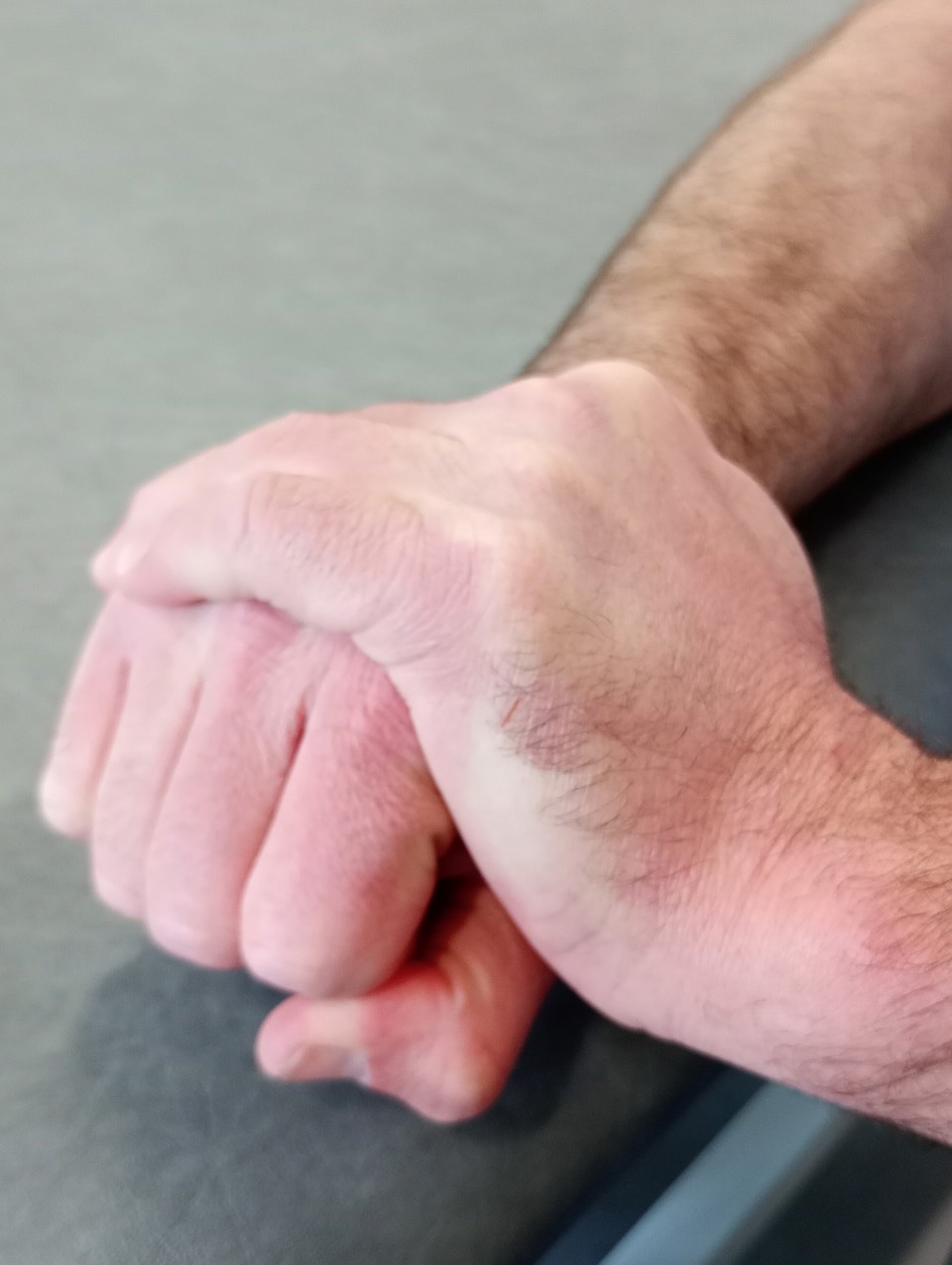
Pronation (elbow and wrist rotation)
Start with your elbow by your side, bent/flexed to 90 degrees. Rotate your forearm so your palm is facing down (pronation). Place your unaffected hand on the back of your wrist, and resist this movement so that your forearm/wrist cannot fully pronate. Hold for 3 to 5 seconds and then relax
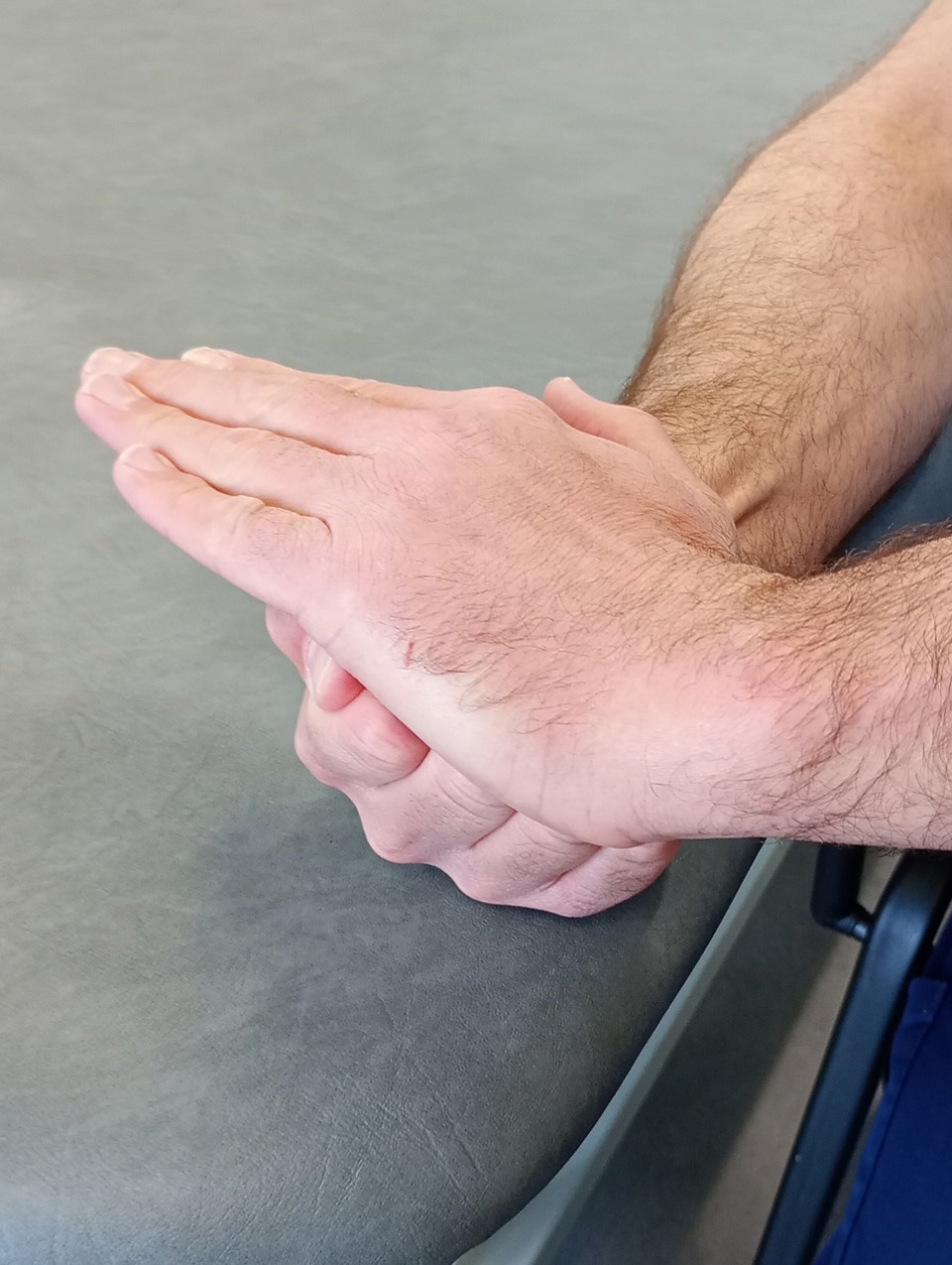
Supination (elbow and wrist rotation)
Start with your elbow by your side, bent/flexed to 90 degrees. Rotate your forearm so your palm is facing up (supination). Place your unaffected hand on the back of your wrist, and resist this movement so that your forearm / wrist cannot fully supinate. Hold for 3 to 5 seconds and then relax.
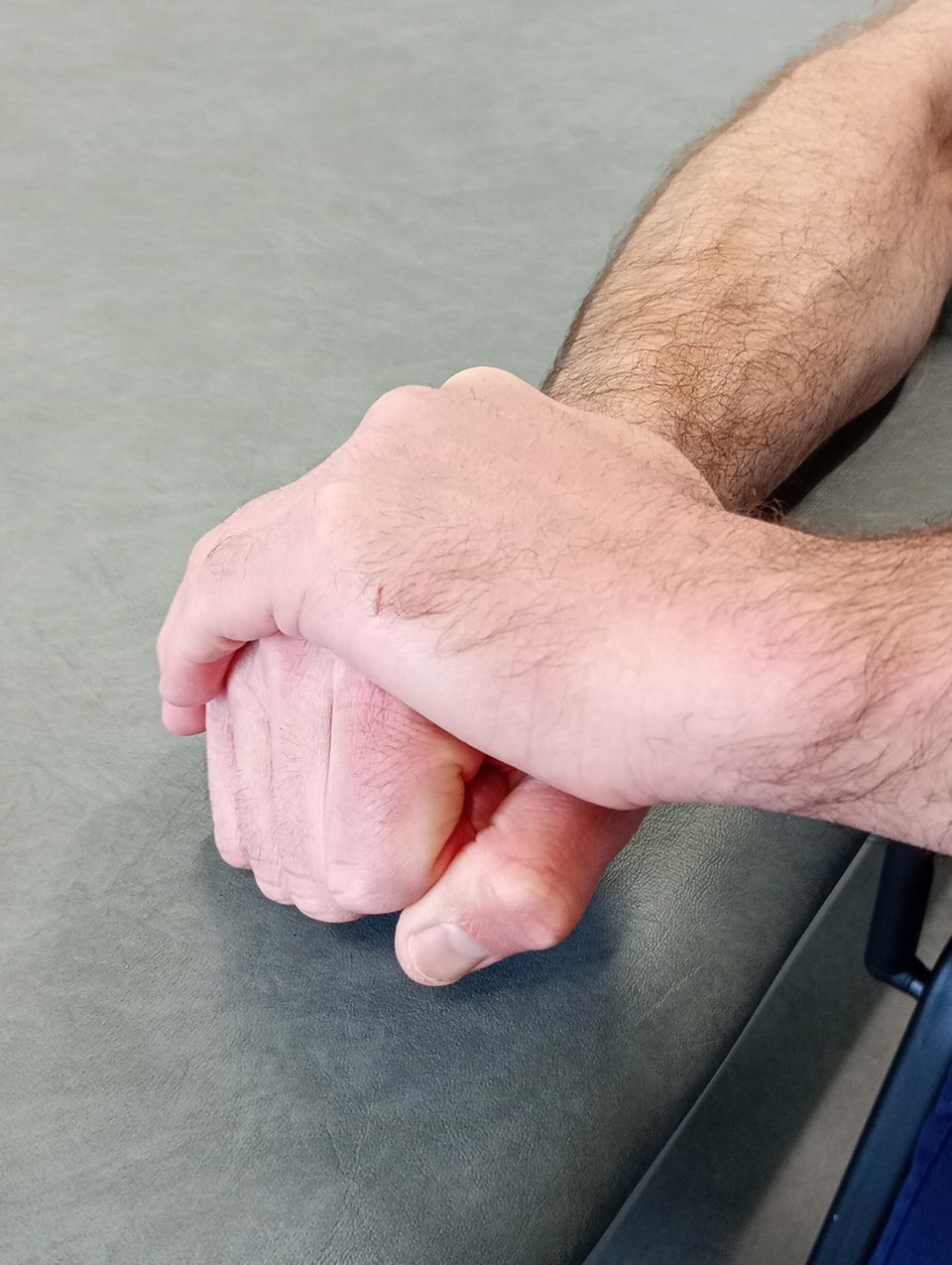
Strengthening with weights
When choosing the correct weight, you should be able to lift the weight 10 times and then your wrist should feel tried. You may need different weights for different exercises. To make the exercises harder you can increase your weight and / or complete extra sets of 10 (up to 3). Tip: Strengthening exercises should be completed every other day.
Wrist Flexion
Holding on to a weight. Begin with your forearm resting on a table palm up, ensuring your wrist is off the edge of the table. Bend (flex) your wrist upwards. Hold for a count of 5 seconds
and then slowly lower your wrist. Repeat this movement slowly and smoothly 10 times.
Wrist Extension
Holding on to a weight. Begin with your forearm resting on a table palm down, ensuring your wrist is off the edge of the table. Bend (extend) your wrist towards you. Hold for a count of 5 seconds and slowly lower your wrist. Repeat this movement slowly and smoothly 10 times.

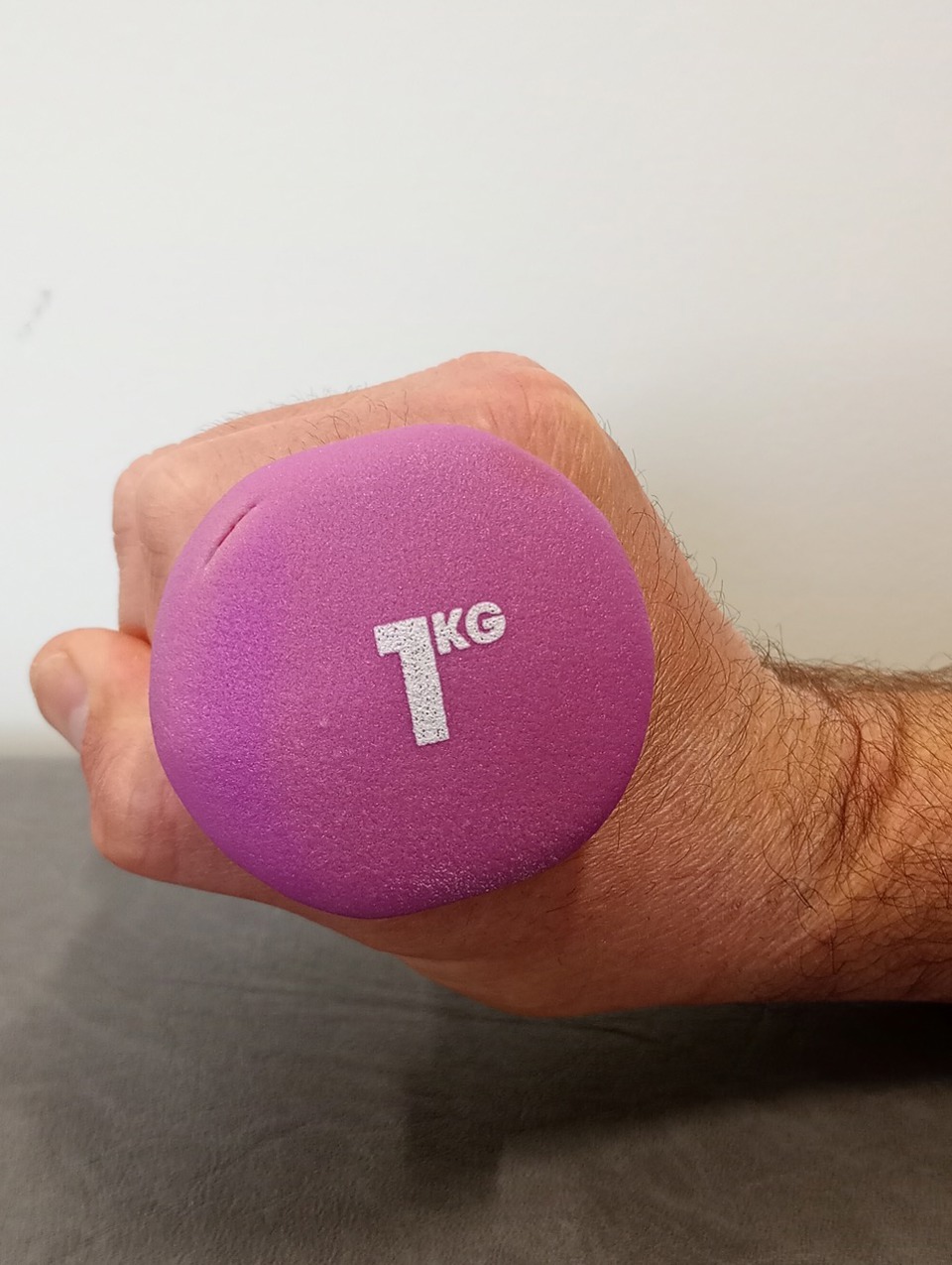
Wrist deviators
Holding on to a weight. Start with your thumb pointing towards the ceiling. Bend your wrist up towards you and hold this position for a count of 5. Then slowly lower your wrist. Repeat this movement slowly and smoothly 10 times.

Weighted supination and pronation
Start with your elbow tucked into your side, your palm facing upwards and your chosen weight in your hand. Move your hand slowly and smoothly so that your palm is facing downwards. Slowly return to the starting position. Repeat 5 times. Make sure you keep your elbow tucked in your side throughout the exercise.
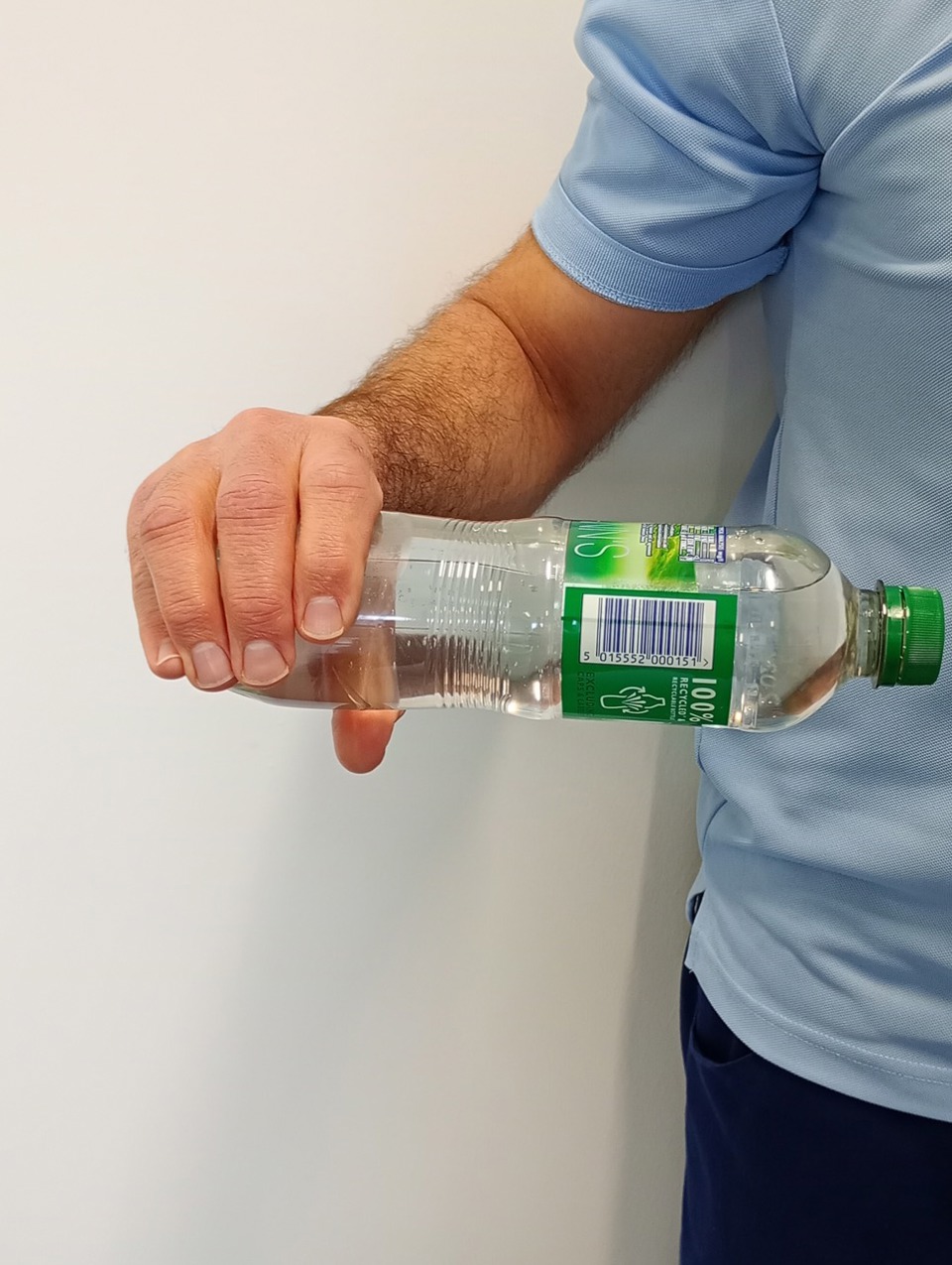
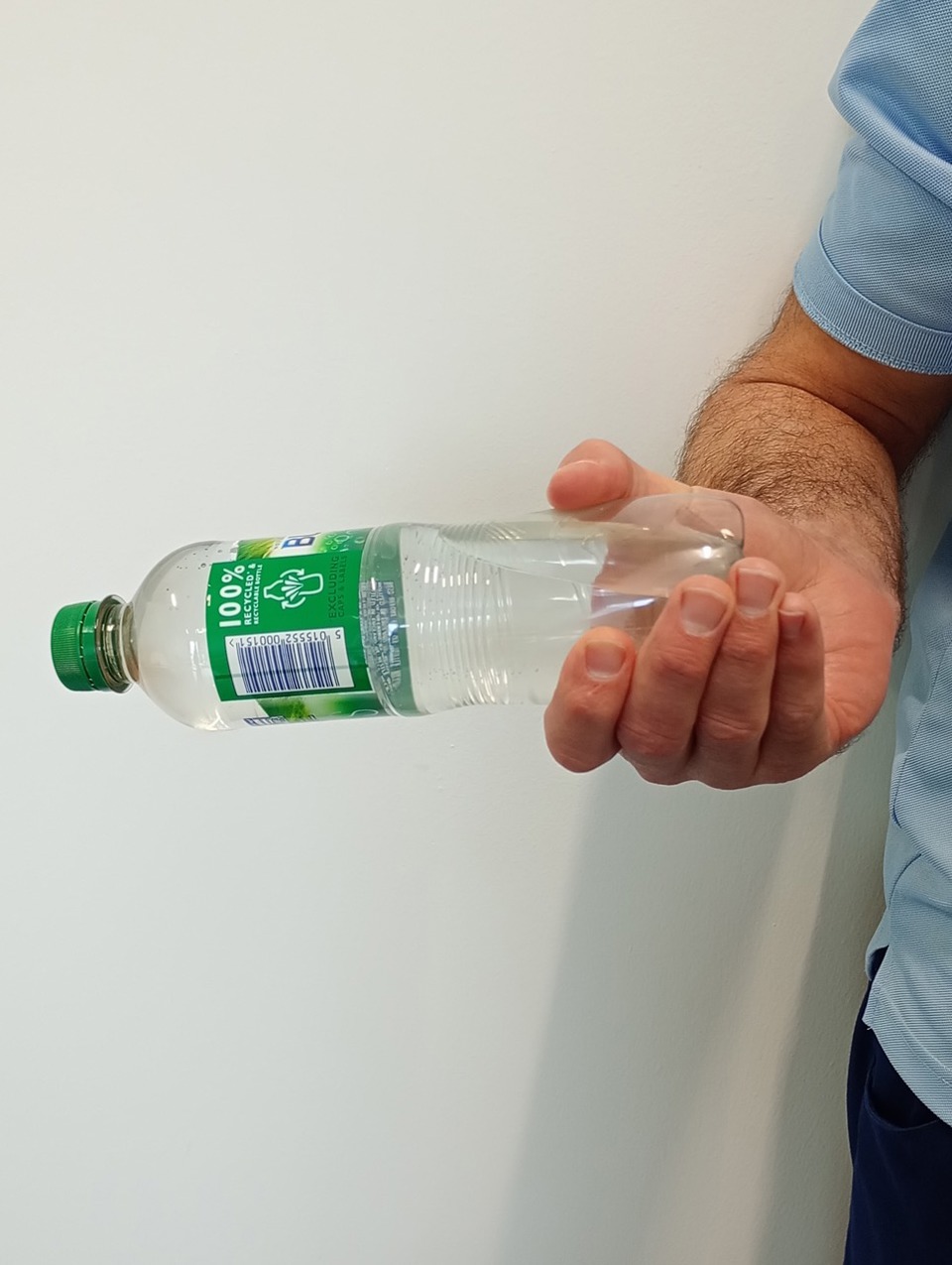
Powerball
A gyroscope strengthens the wrist by producing multidirectional movements against resistance. Your therapist will show you how to use a gyroscope. Gyroscopes can be purchased online.
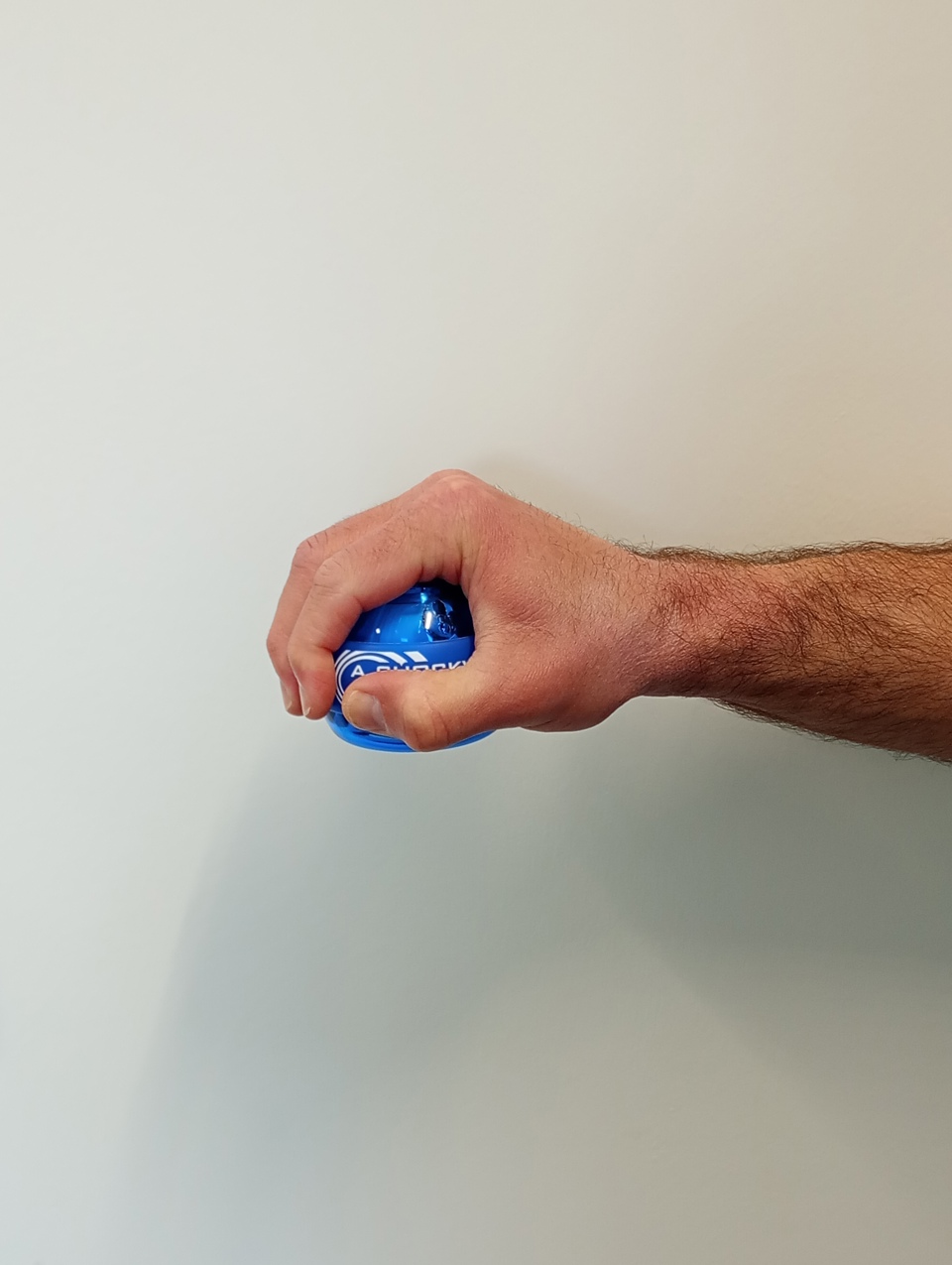
Timescales
|
0 to 6 weeks |
Focus on regaining movement and light function. You will start to gradually reduce the use of your splint. Aim to stop wearing the Futura splint after 6 to 8 weeks post injury. |
|
7 to 8 weeks |
Begin weight bearing and aim to increase wrist dexterity (see exercises). You can gradually increase the amount you lift and start to strengthen your wrist. You can now start completing strengthening exercises. |
|
9 to 12 weeks |
No restrictions on activity. The bone is strong enough to return to contact sports and lift heavy weights. It must be noted that the soft tissue and muscles are still recovering, so your wrist is unlikely to feel completely normal at this stage. |
|
12 weeks+ |
It is normal to have some mild ongoing swelling, morning stiffness and occasional aches and pains with new or heavy activity. |
|
12 months |
It can take up to a year until your wrist completely recovered from this injury. |
|
Driving |
Only return to driving when you feel safe to control the car. Contact your insurance company for further guidance. |
Further Advice
NHS Inform – How to Apply ICE - Advice www.nhsinform.scot/illnesses-and-conditions/muscle-bone-and-joints
Worries or concerns
For Non-Urgent Issues/Concerns:
For non-urgent issues or concerns please contact your Consultant’s Secretary through the NHS Fife Hospital Switchboard 01592 643355.
For Urgent Issues/Concerns:
If you have any urgent concerns regarding your condition, please contact the Service:
Urgent advice for patients with post-surgical problems between the hours of 8am to 8pm Monday to Sunday, contact the National Treatment Centre - Fife Orthopaedics 01592 643355 Extension 22685.
Urgent Out of the Above Hours Advice:
For an urgent problem out of hours please contact NHS 24 on 111 or attend the Accident & Emergency Department.
Acknowledgements: Content and format based on original work by University Hospitals Sussex, NHS Foundation Trust with thanks
Worries or concerns
For non-urgent issues or concerns
For non-urgent issues or concerns please contact your Consultant’s Secretary through the NHS Fife Hospital Switchboard 01592 643355.
For urgent issues or concerns
If you have any urgent concerns regarding your condition, please contact the Physiotherapy Service on 01592 647199.
Urgent advice for patients between 8am to 8pm Monday to Sunday, contact the National Treatment Centre - Fife Orthopaedics on 01592 643355 Extension 22685.
Urgent out of the hours advice
For an urgent problem out of hours, please contact NHS 24 on 111 or attend Accident and Emergency.
Acknowledgements: Content and format based on original work by University Hospitals Sussex, NHS Foundation Trust with thanks
Accessible formats
If you require this information in a community language or alternative format such as Braille, audio, large print, BSL, or Easy Read, please contact the Equality and Human Rights Team at: email: fife.EqualityandHumanRights@nhs.scot or phone 01592 729130. For people with a hearing or verbal impairment you can also contact the team through the NHS Fife SMS text service number on 07805800005.




